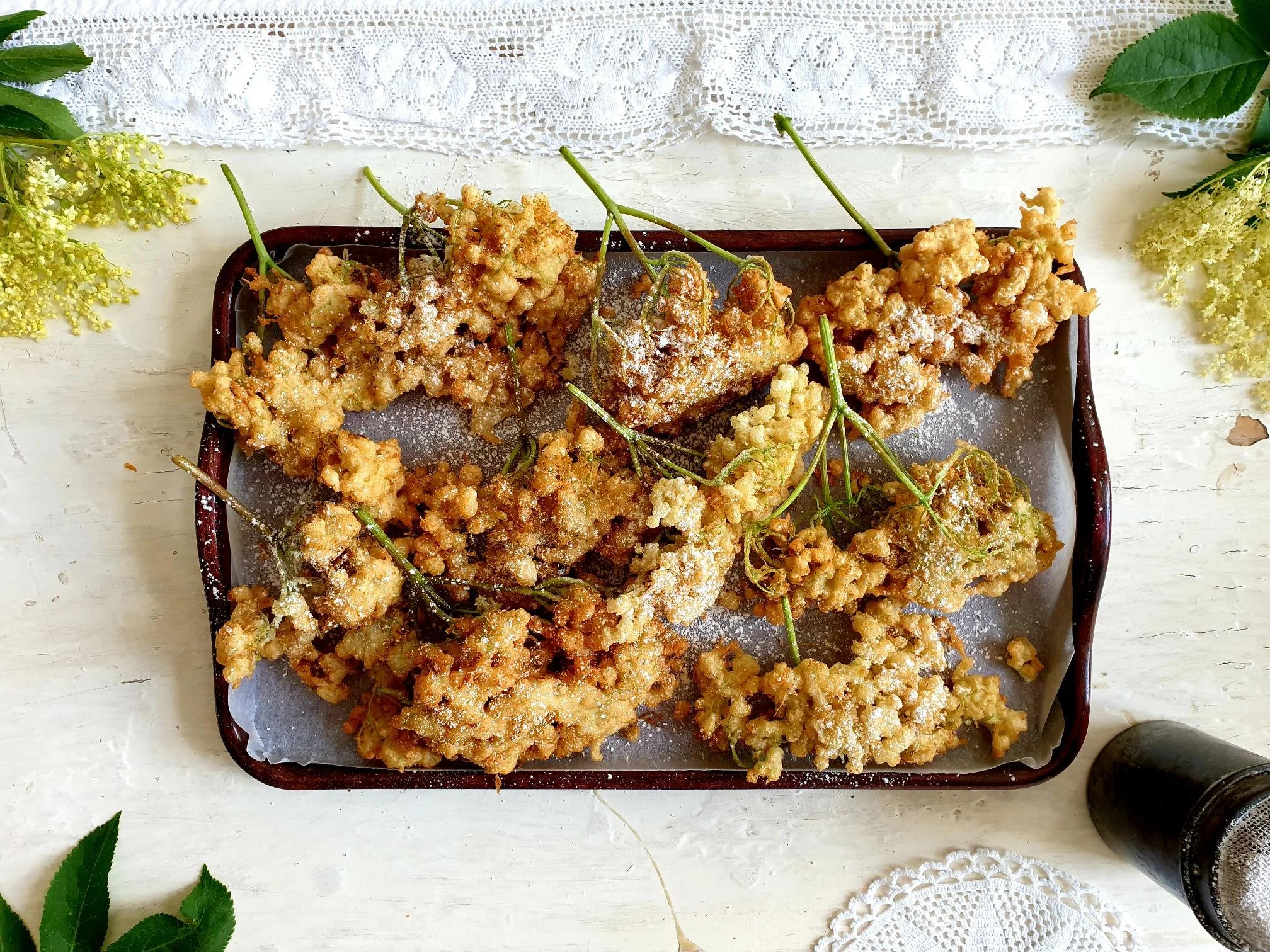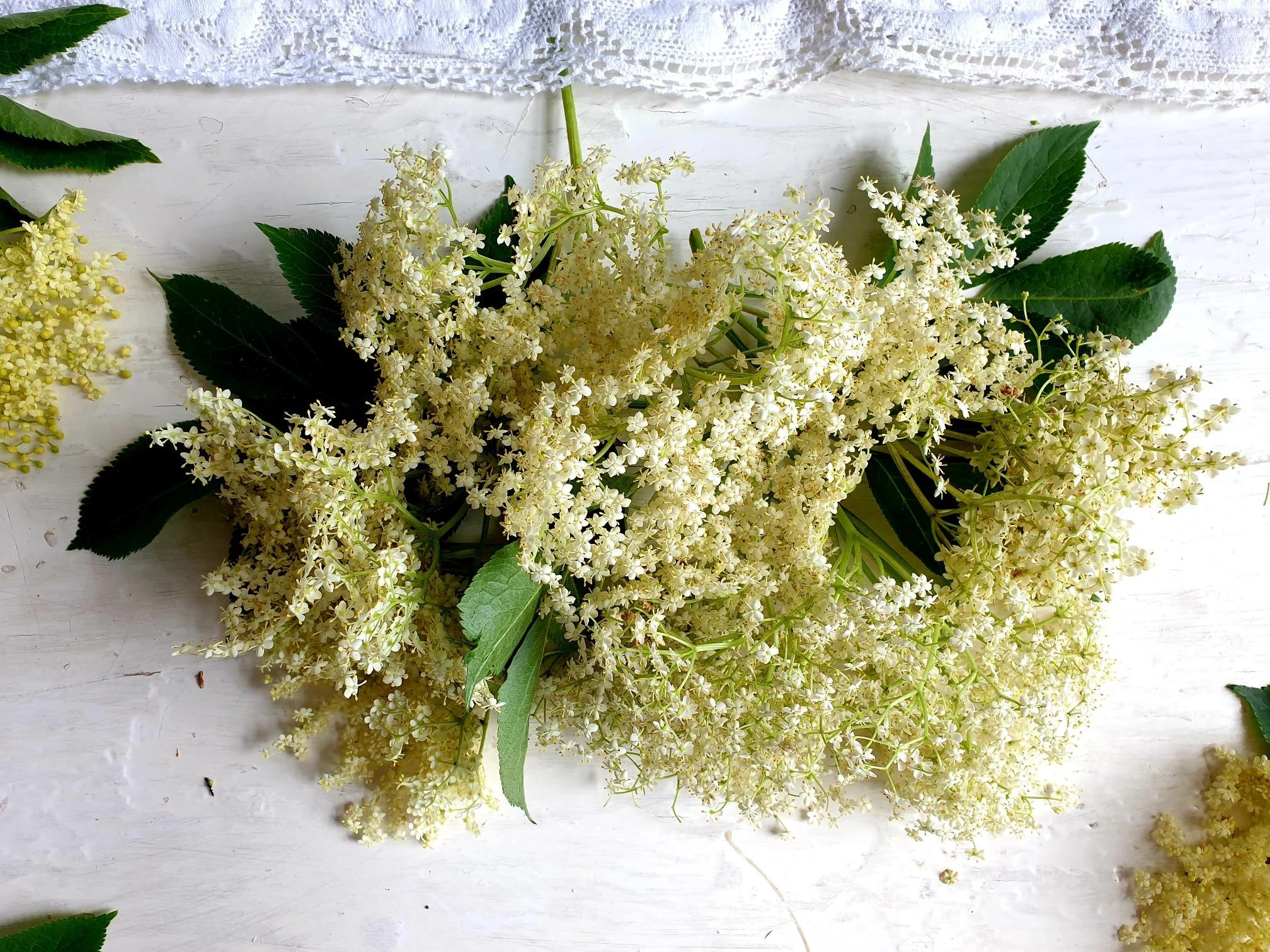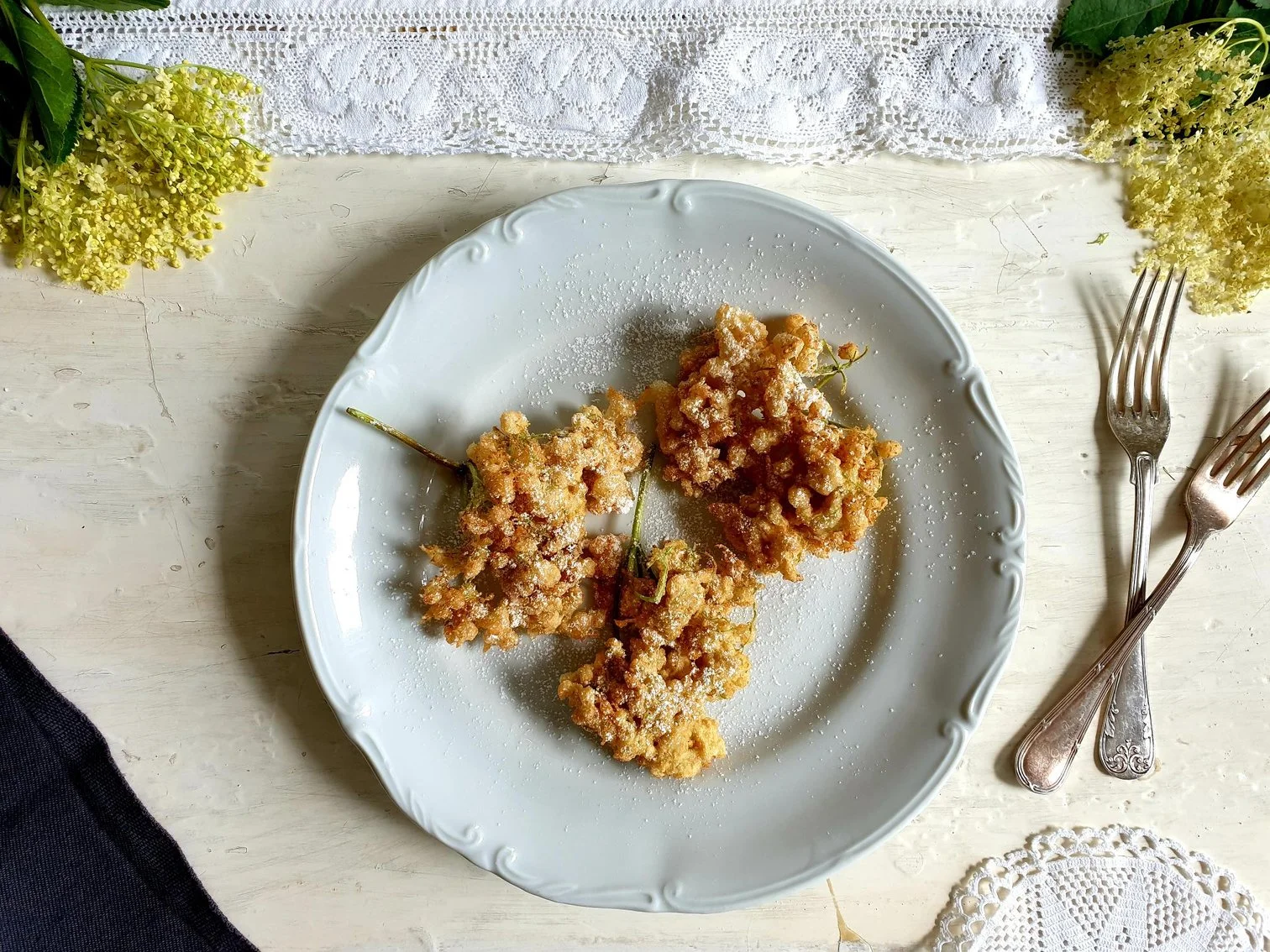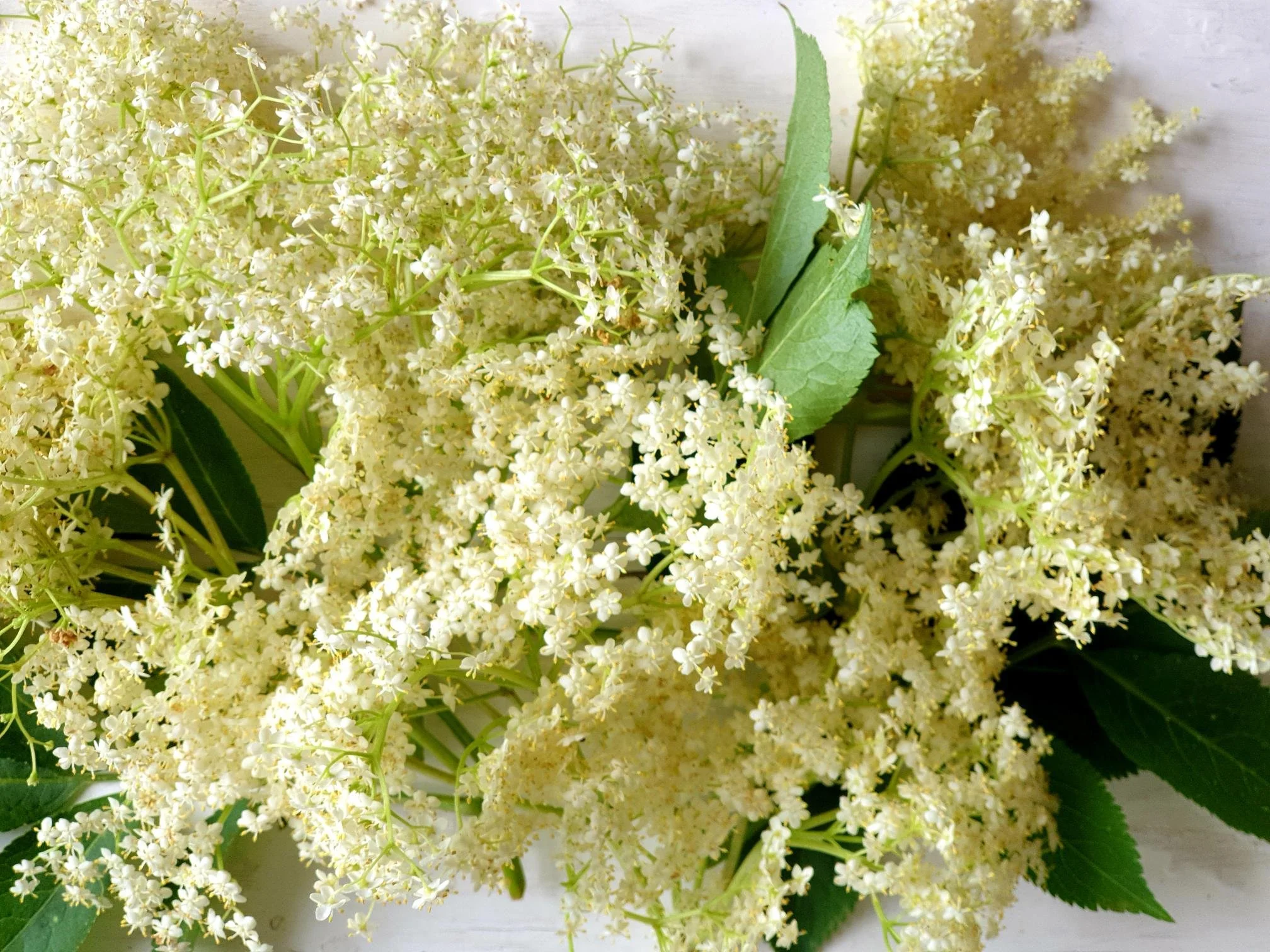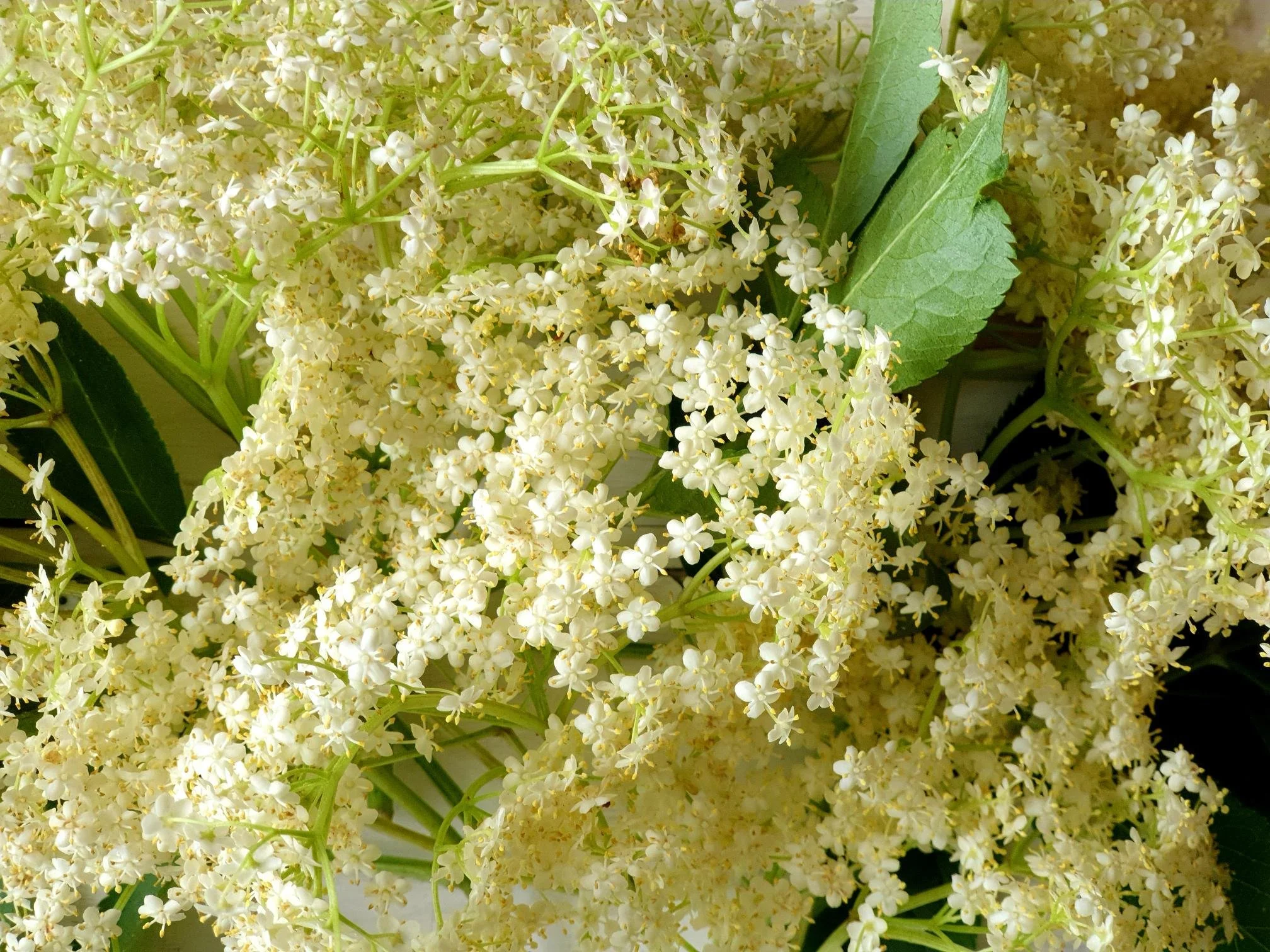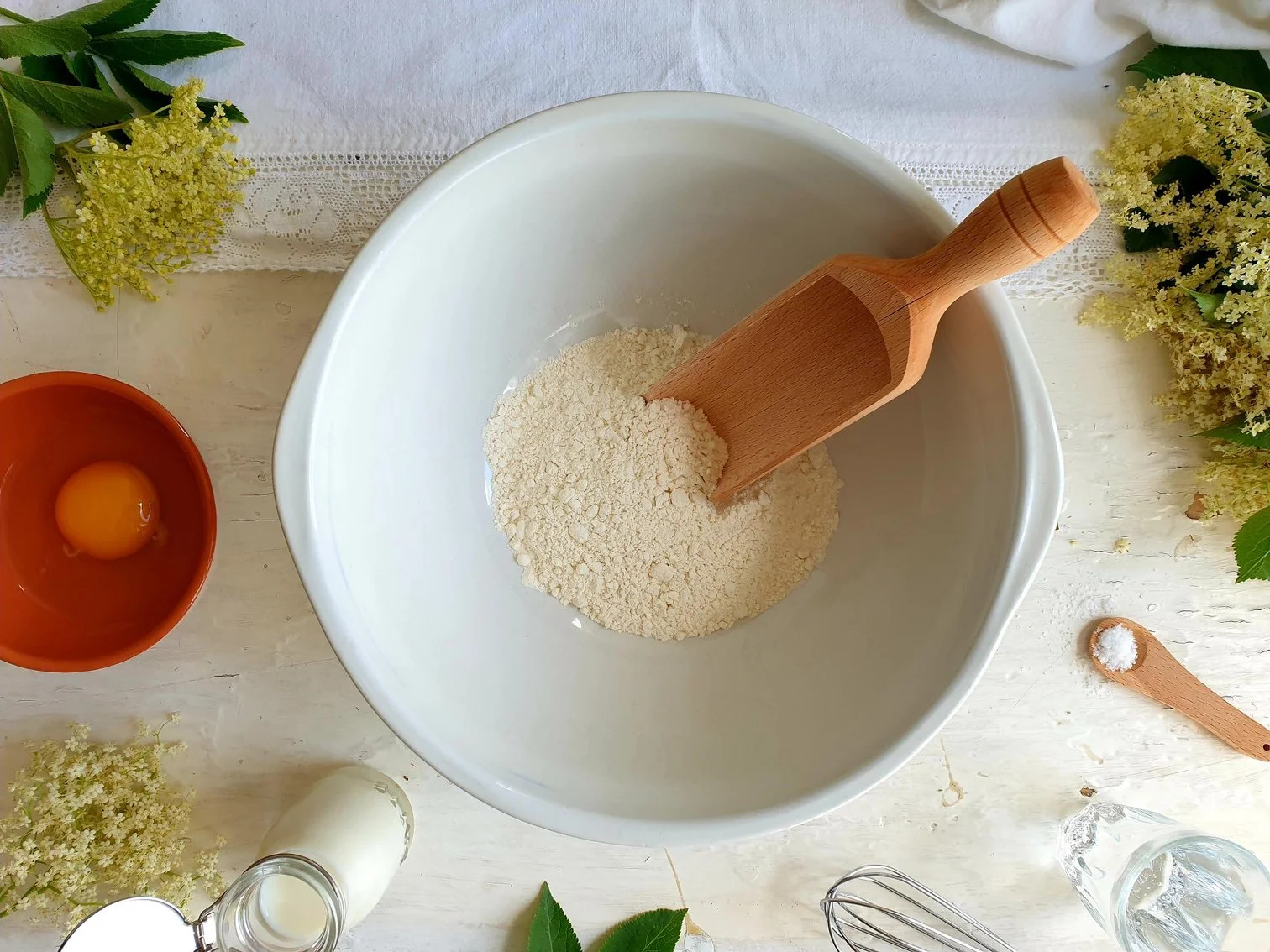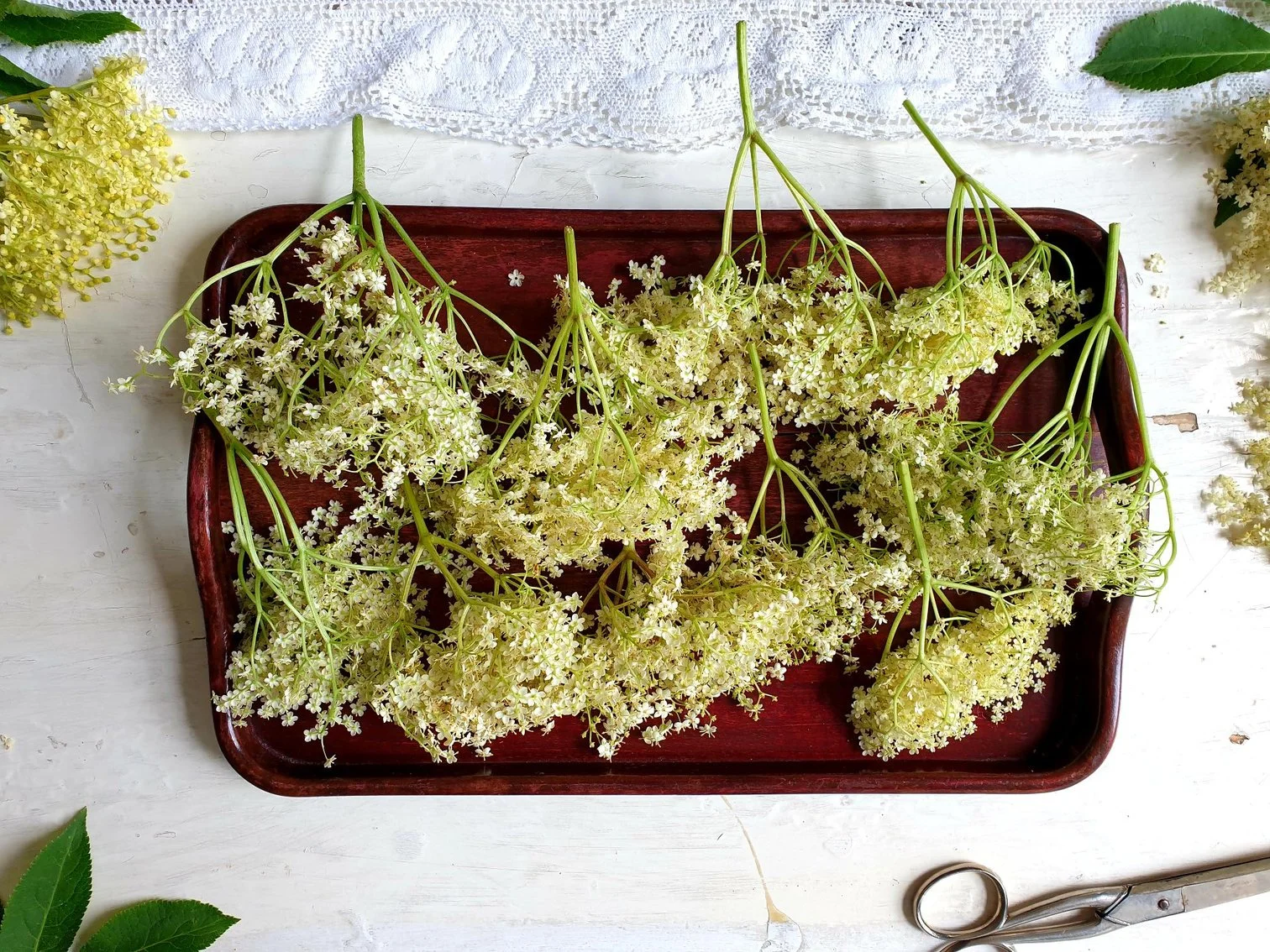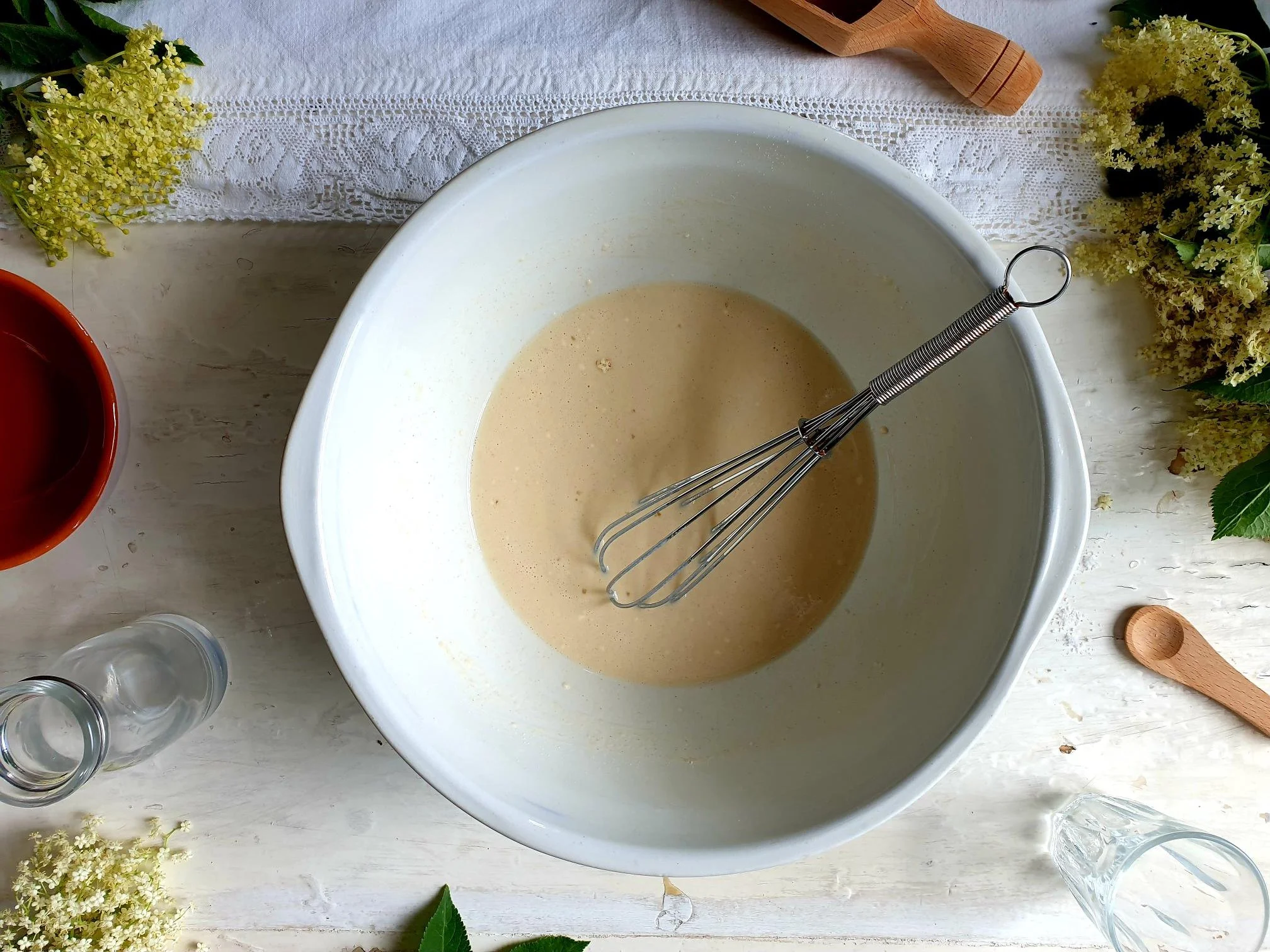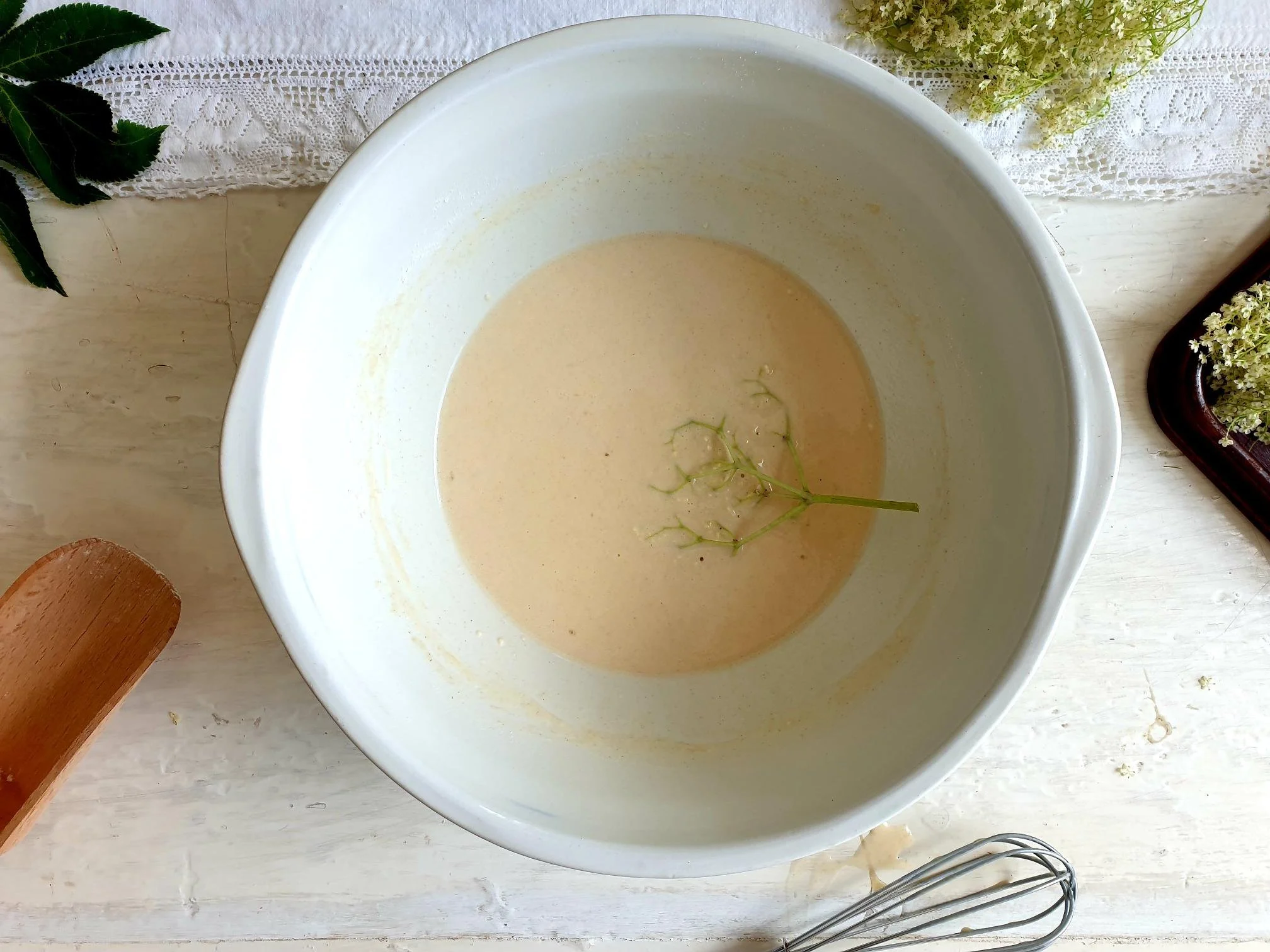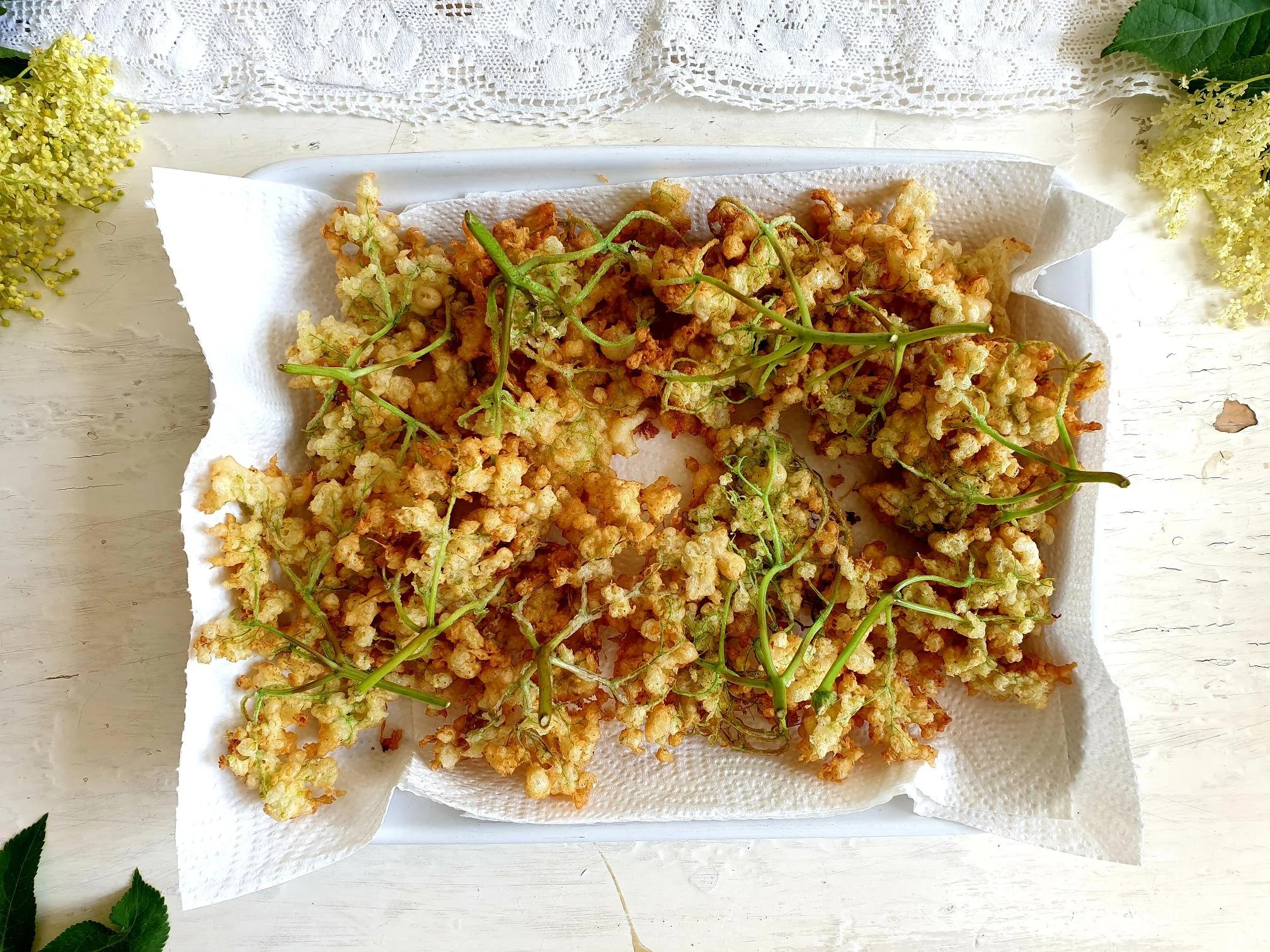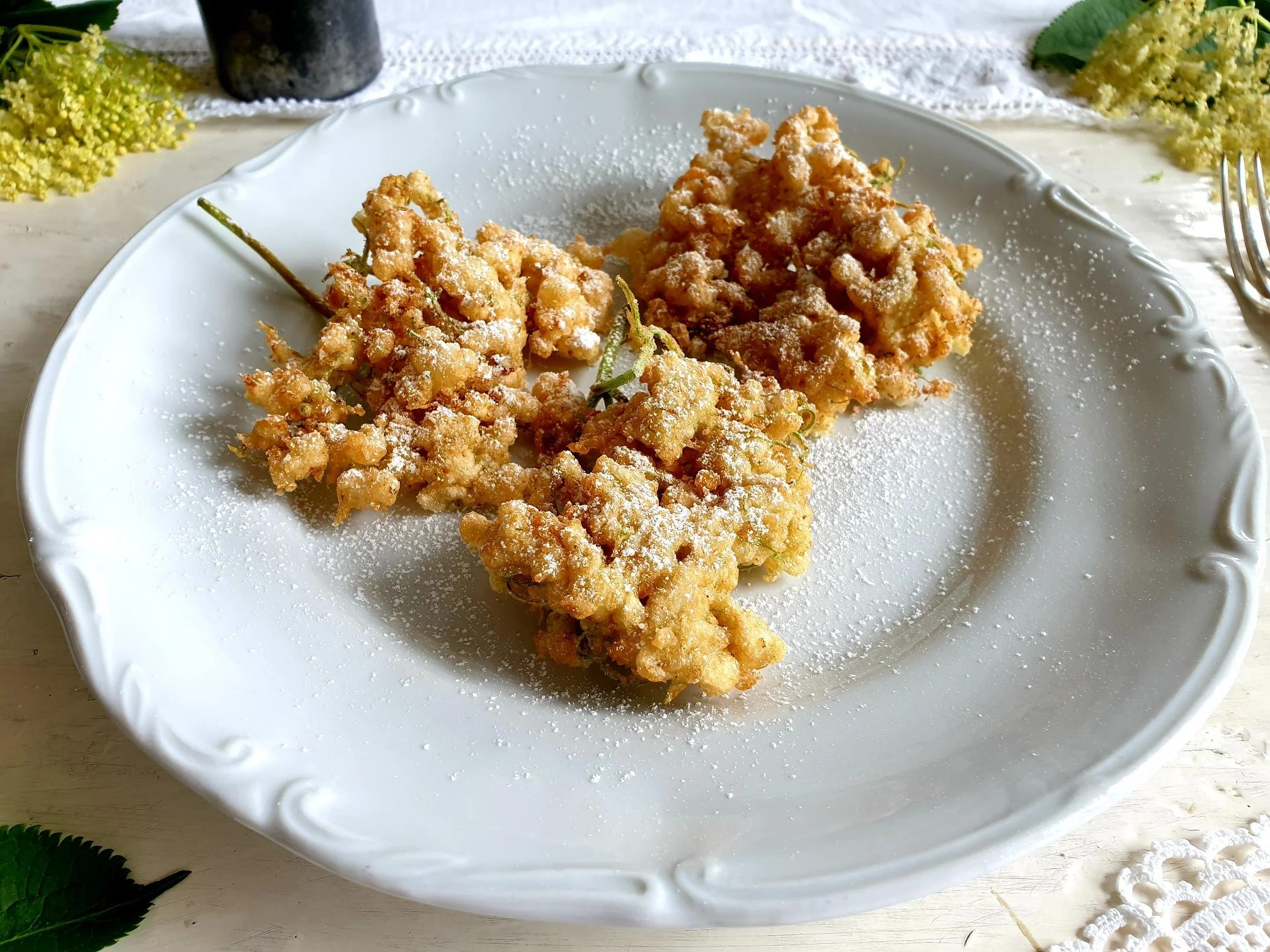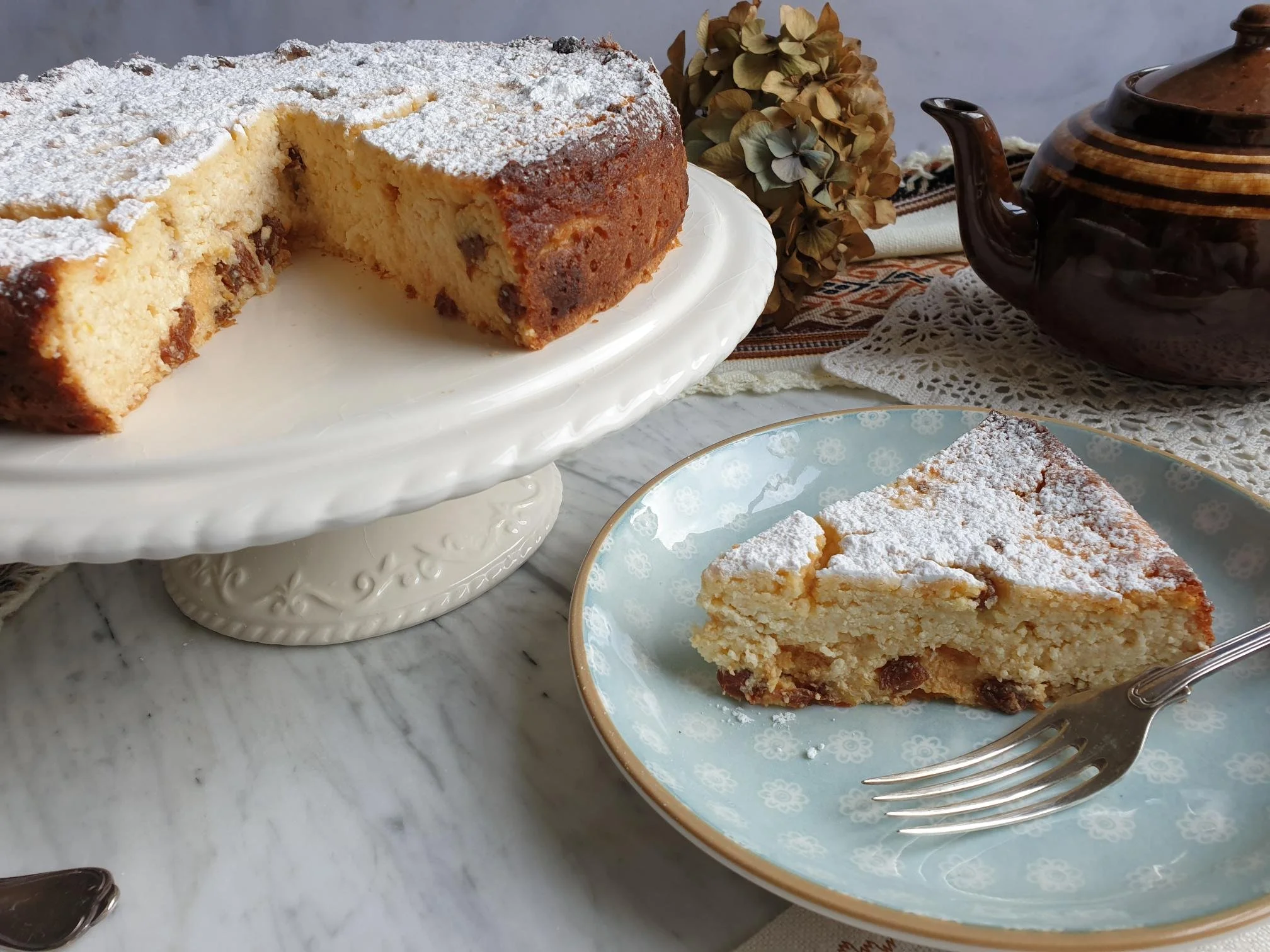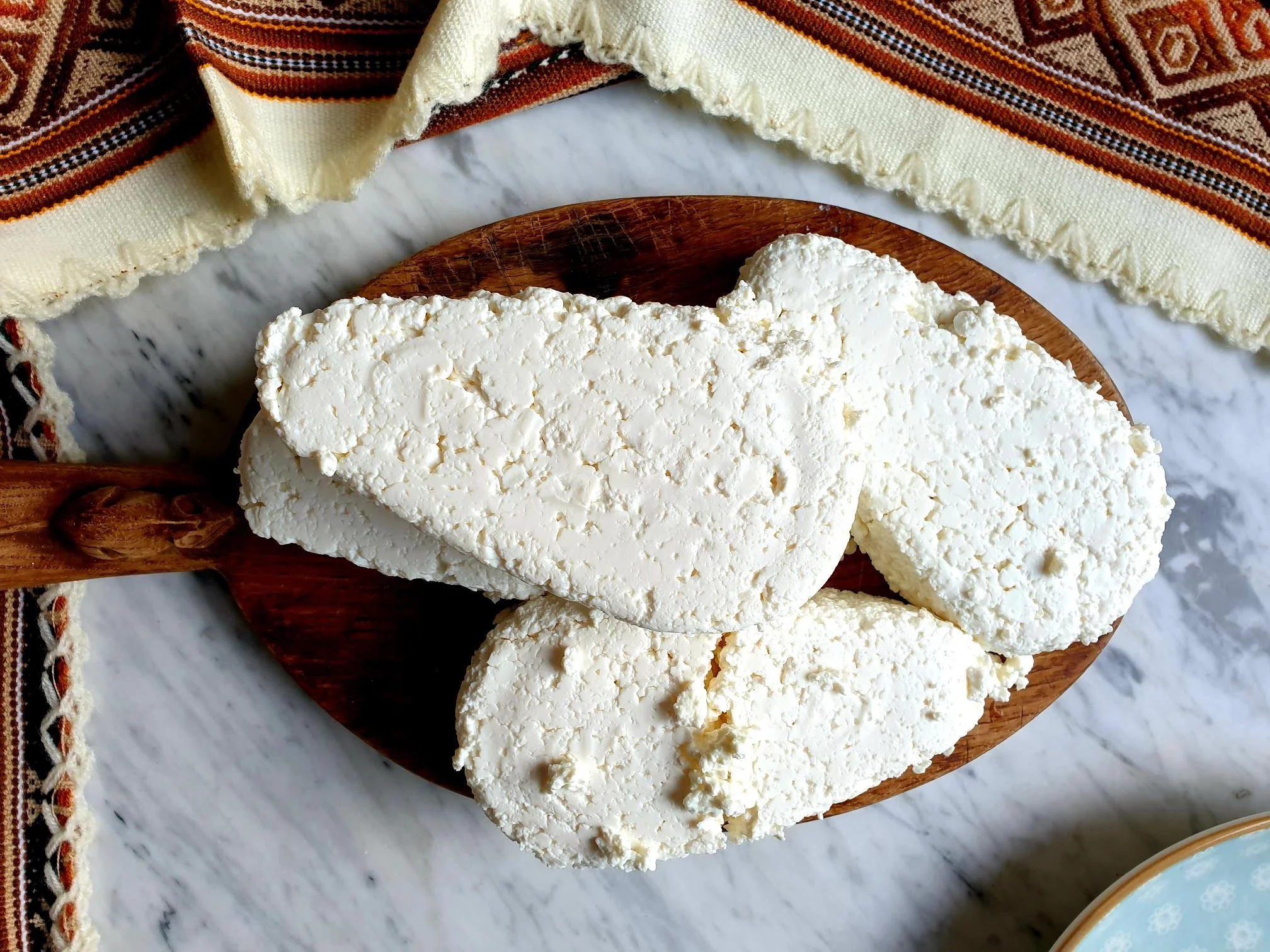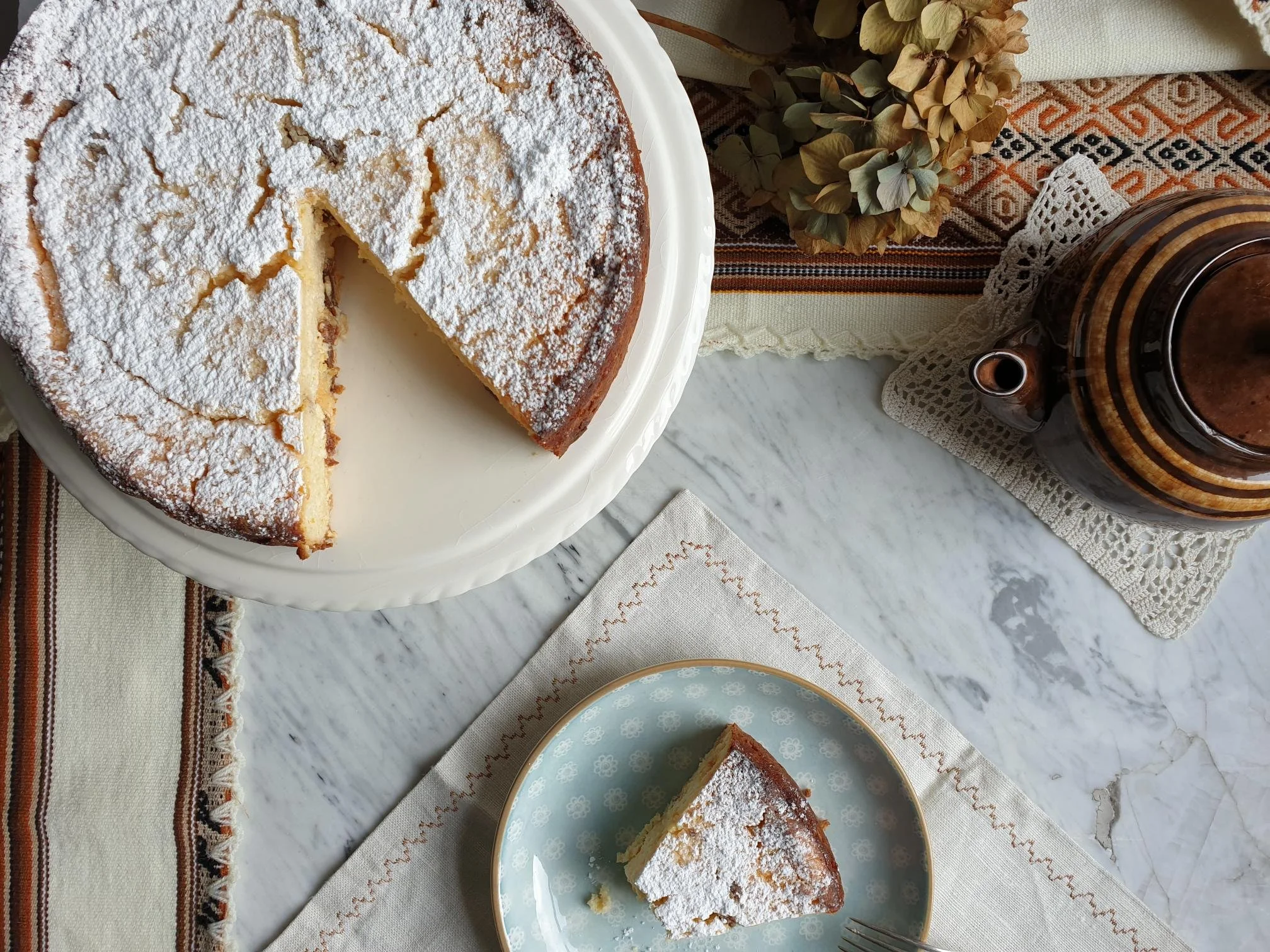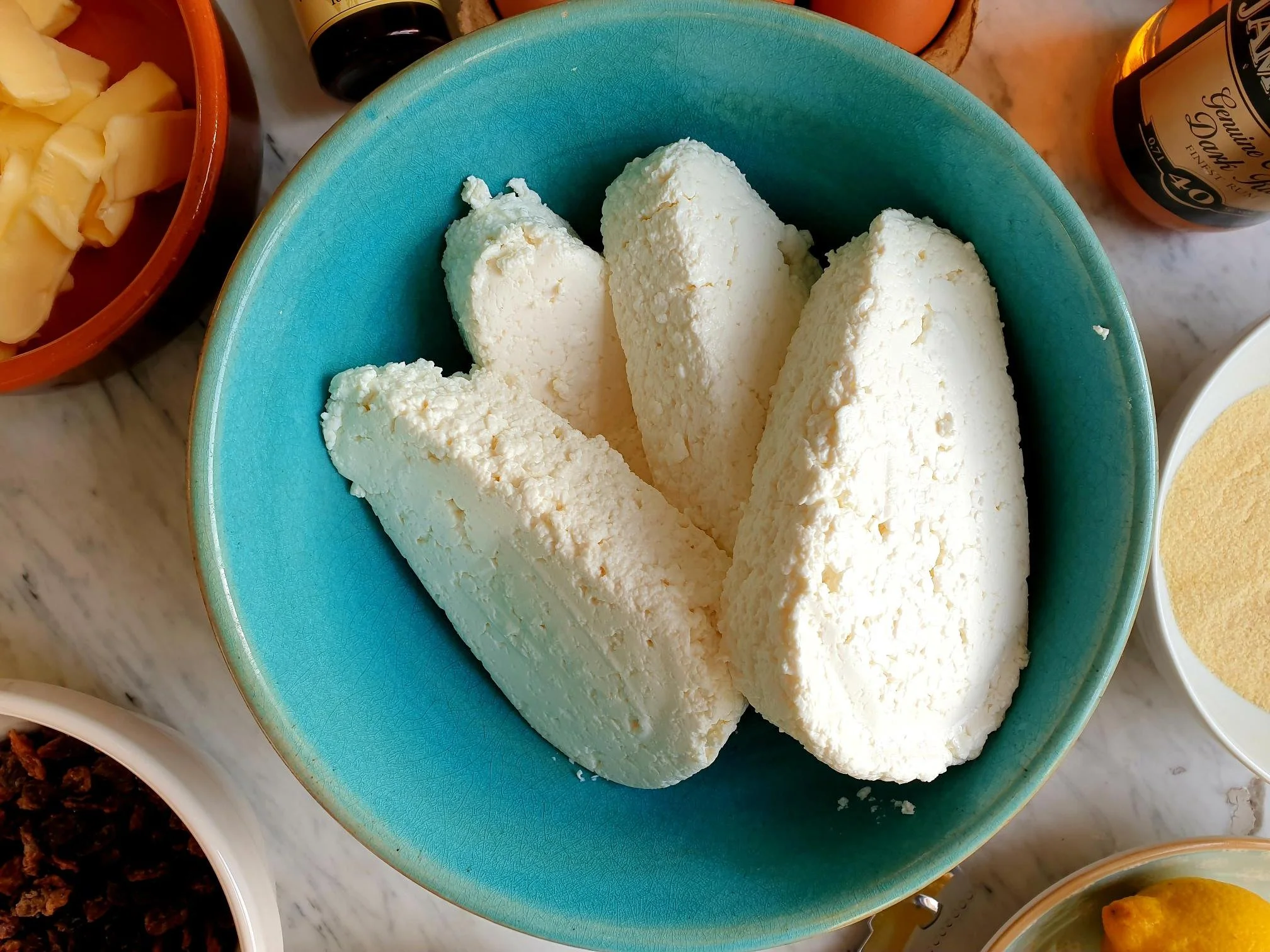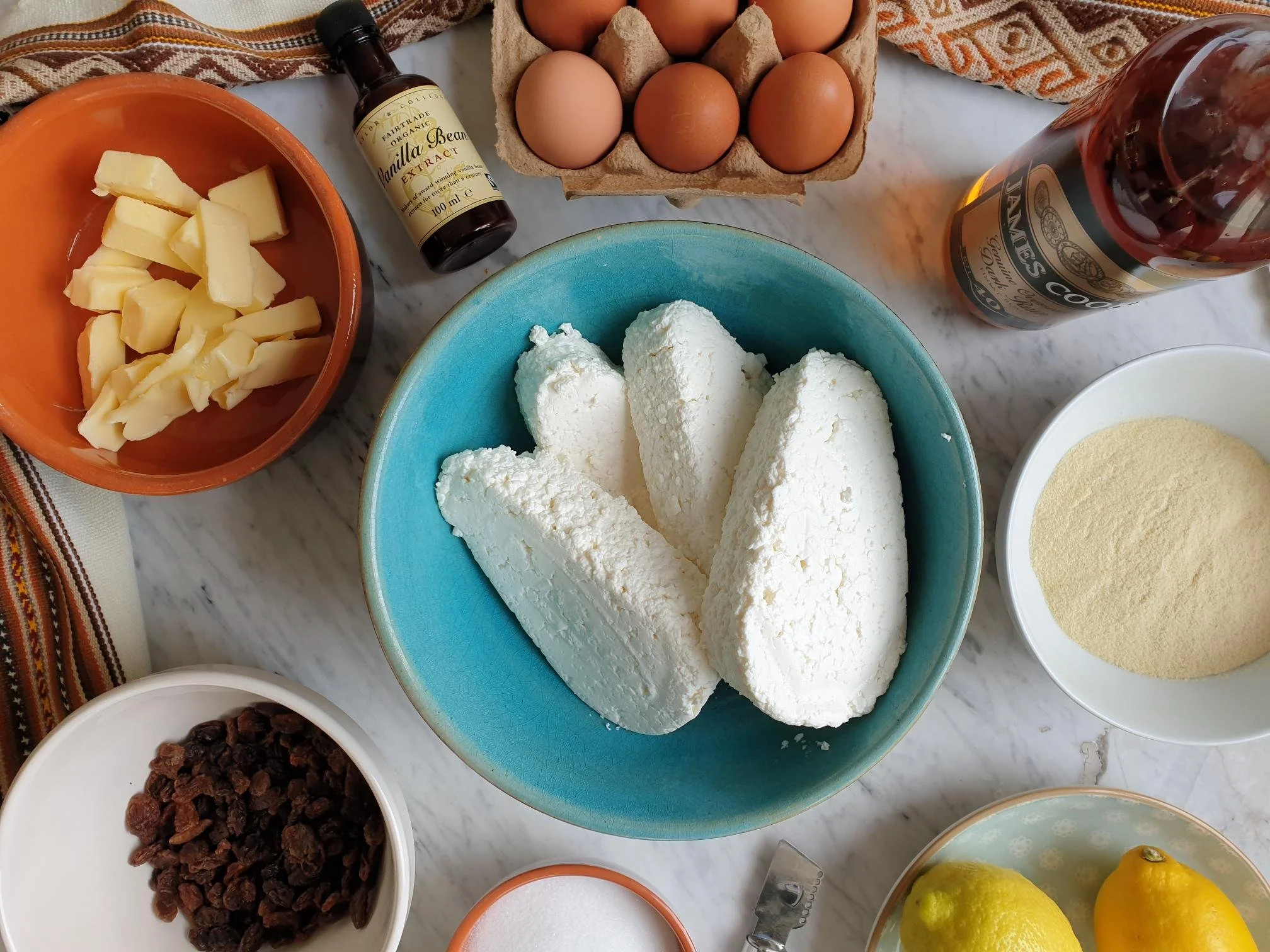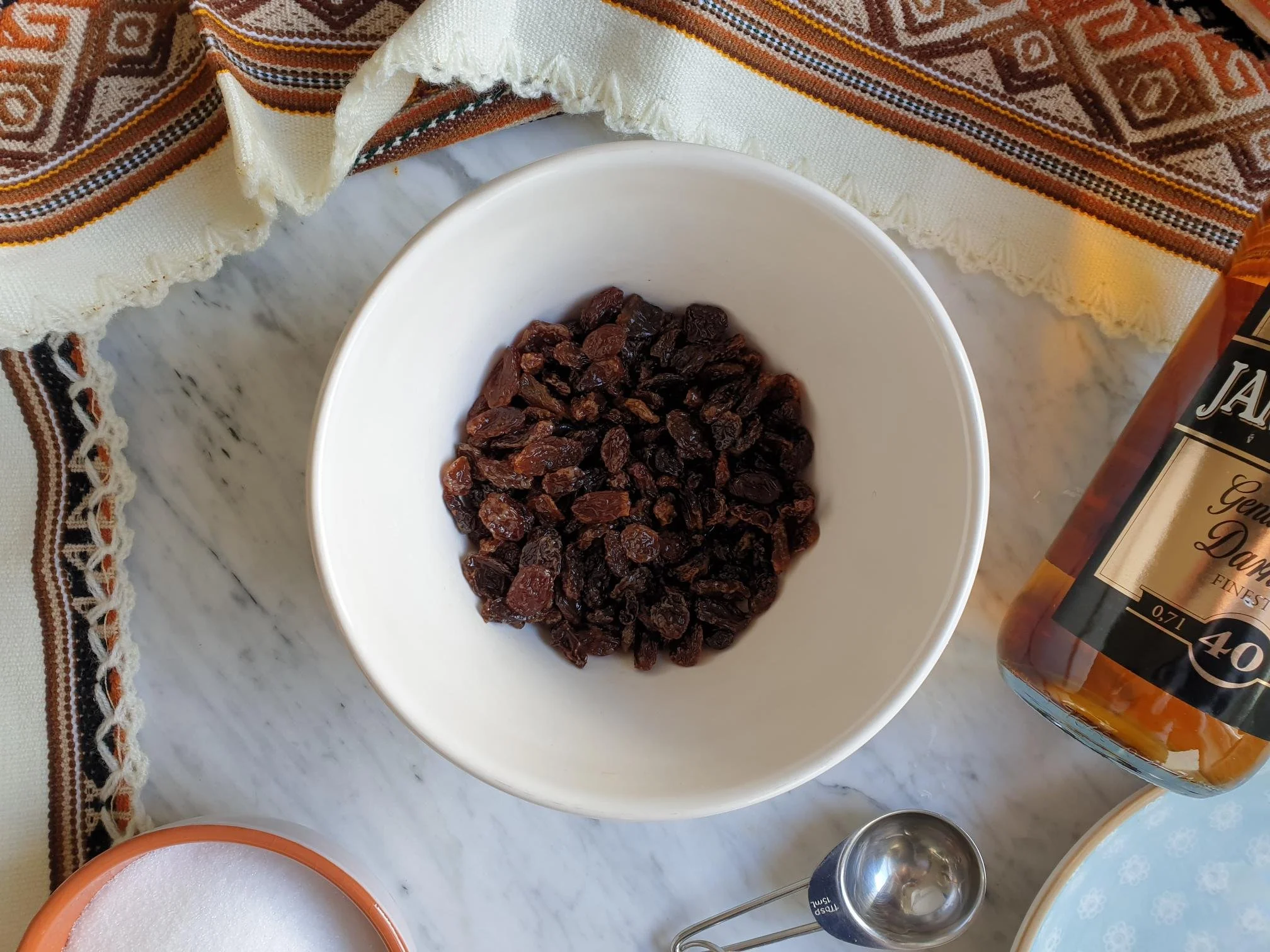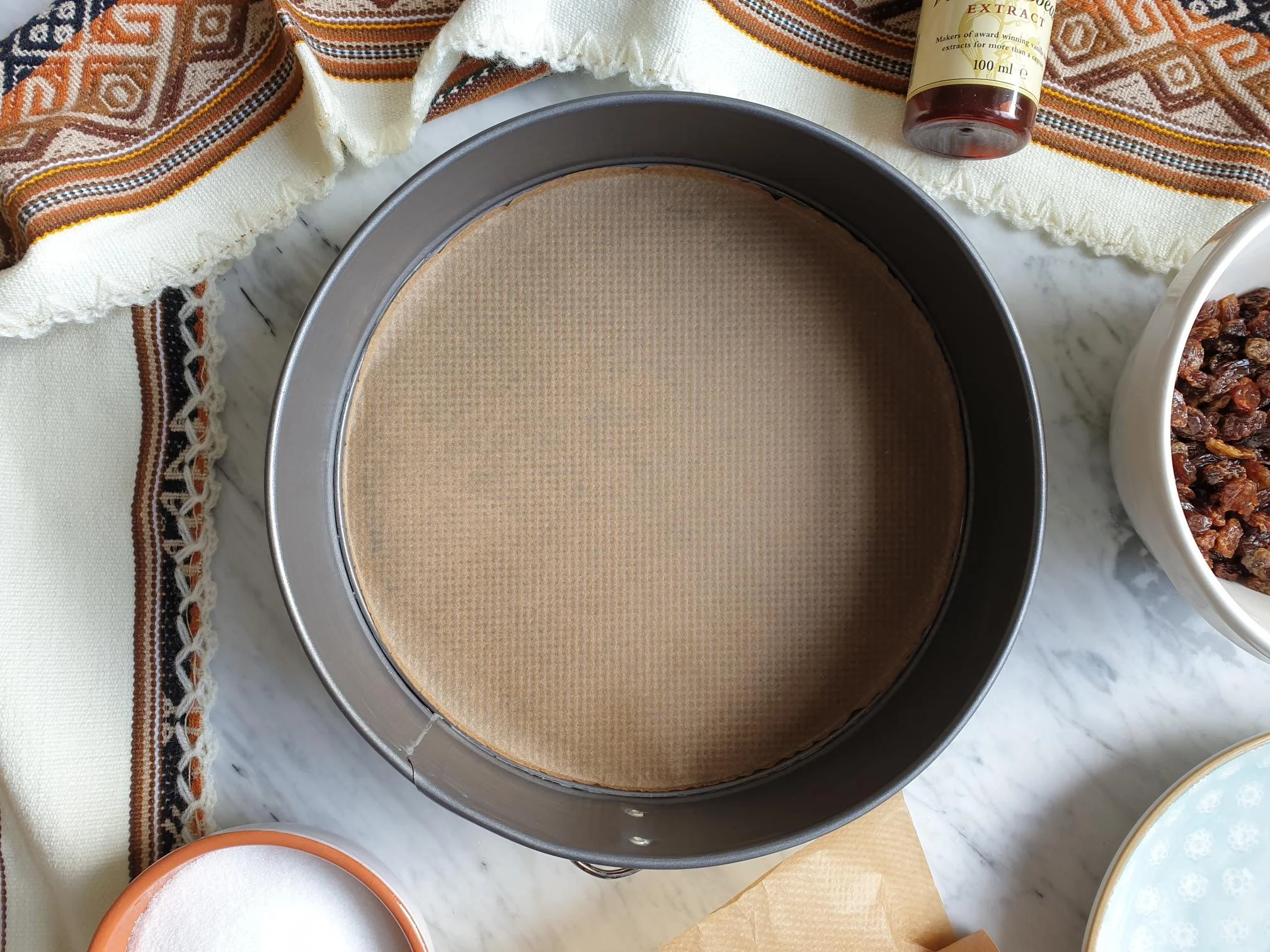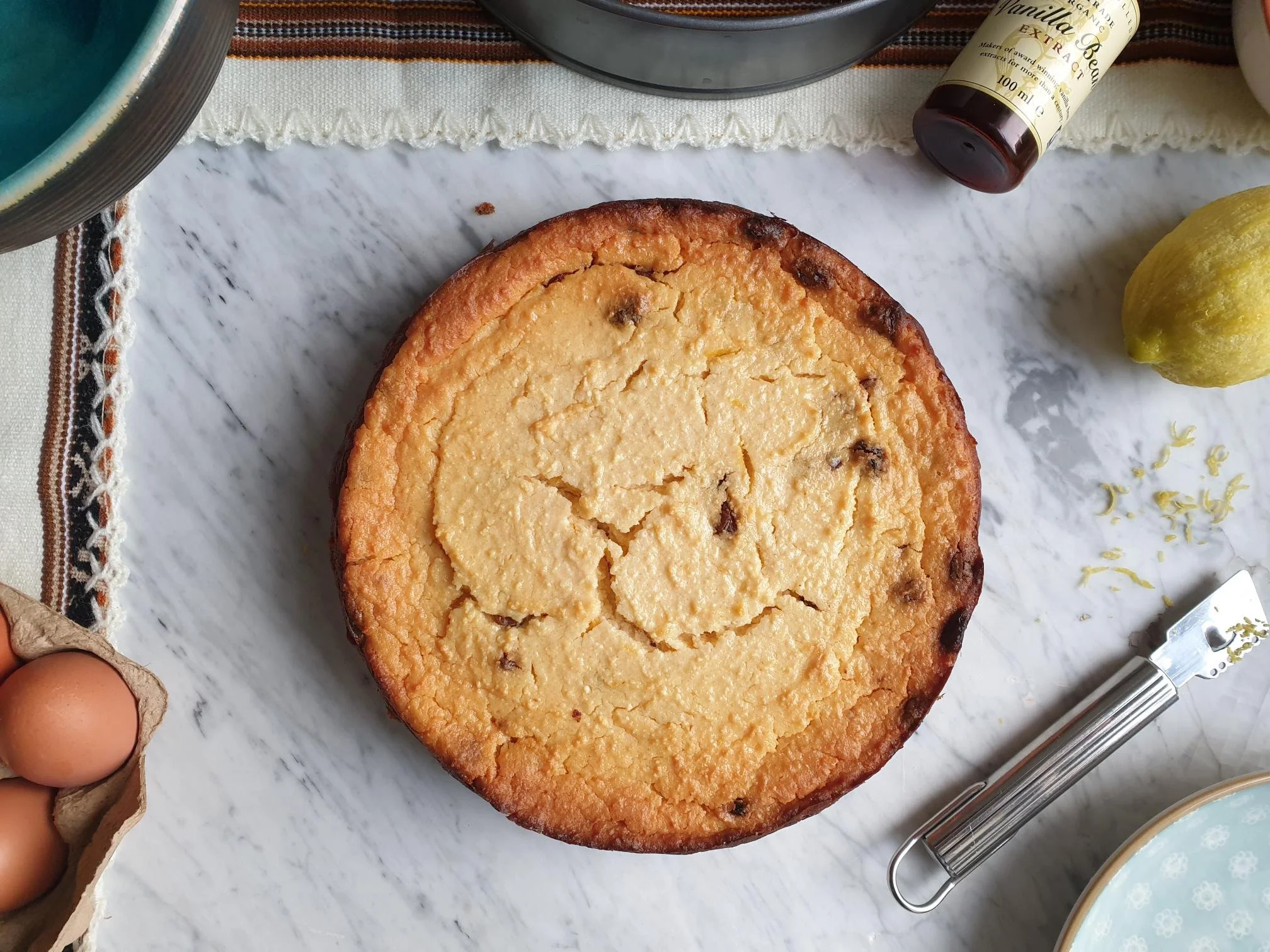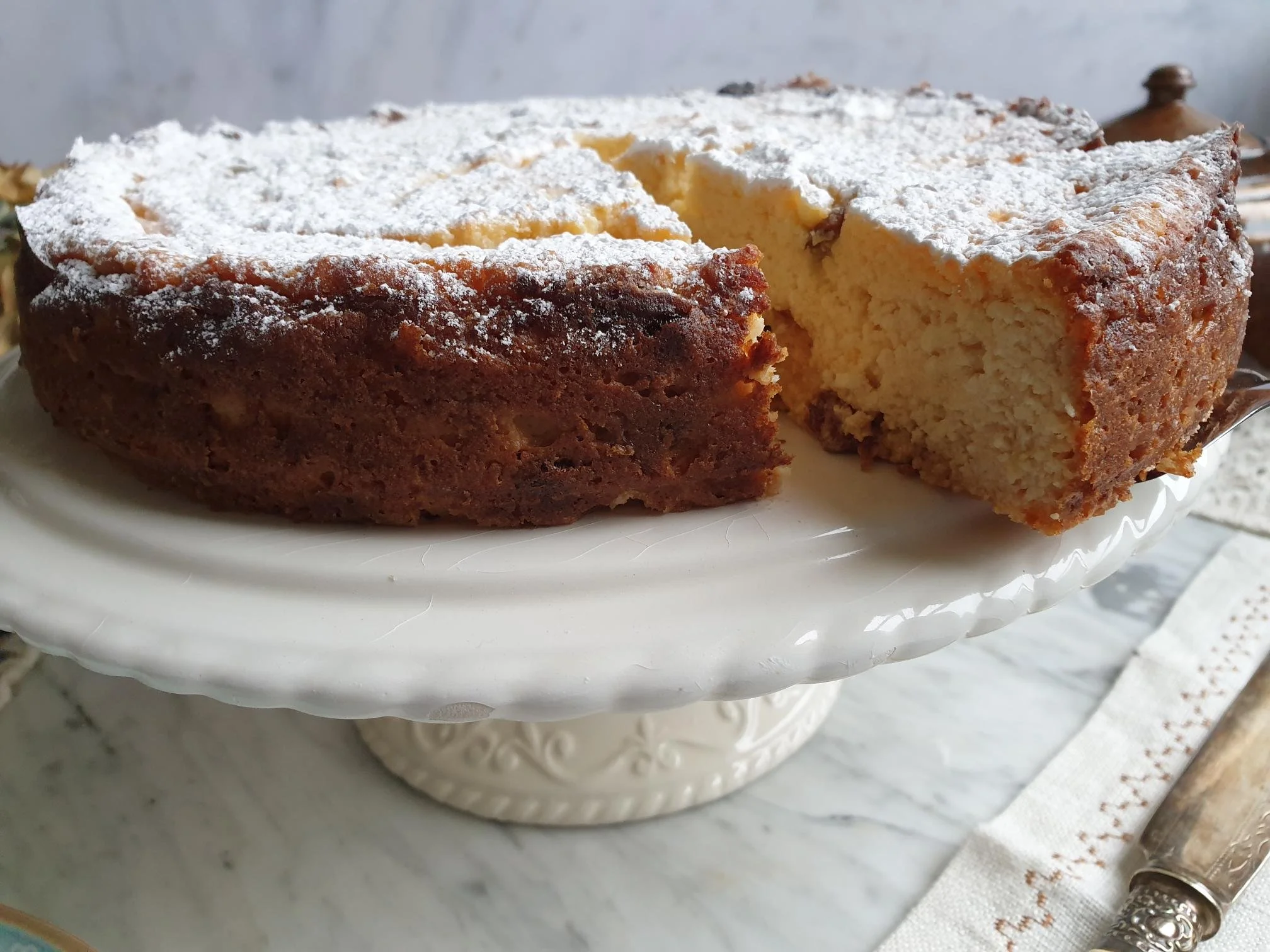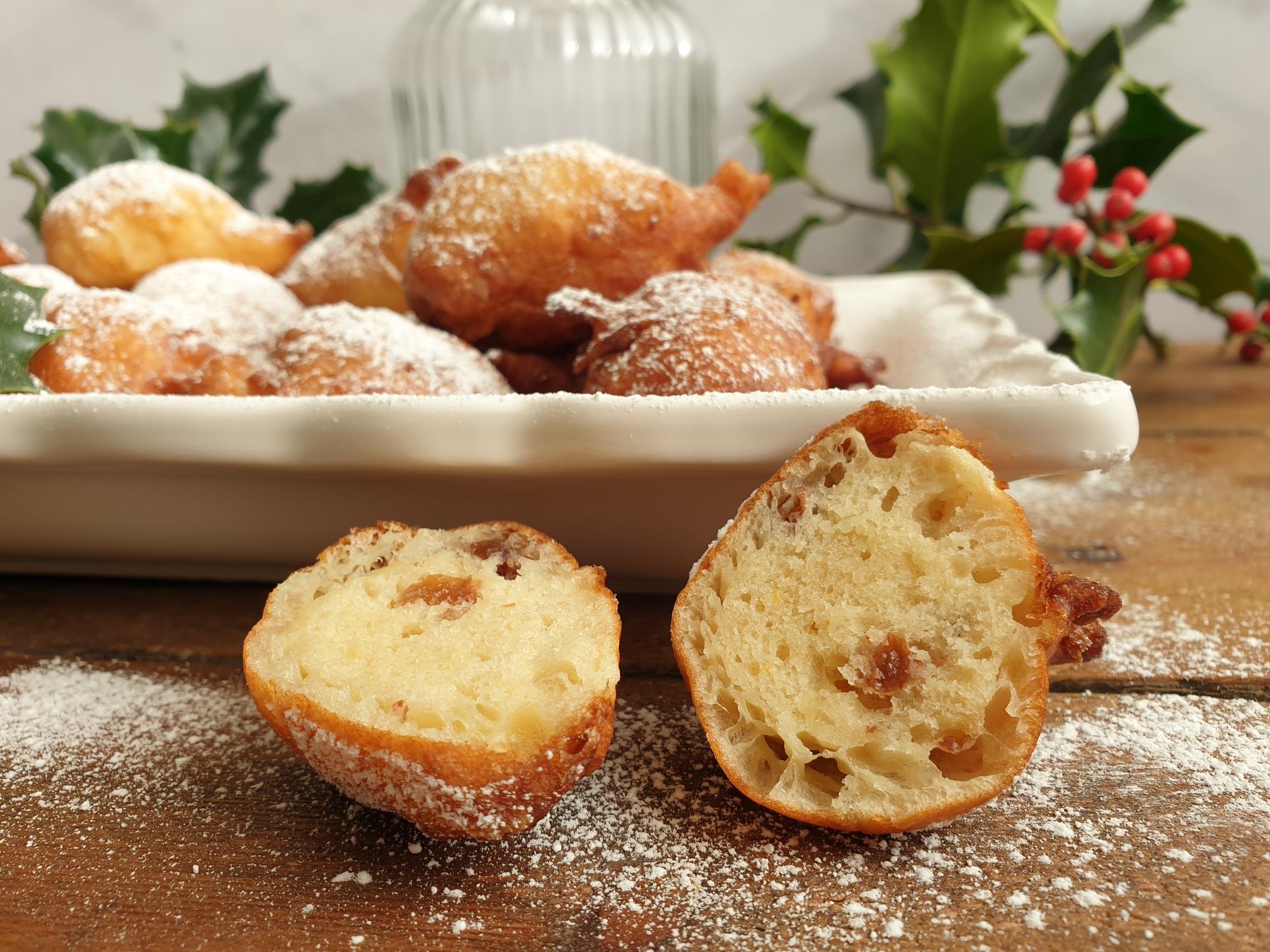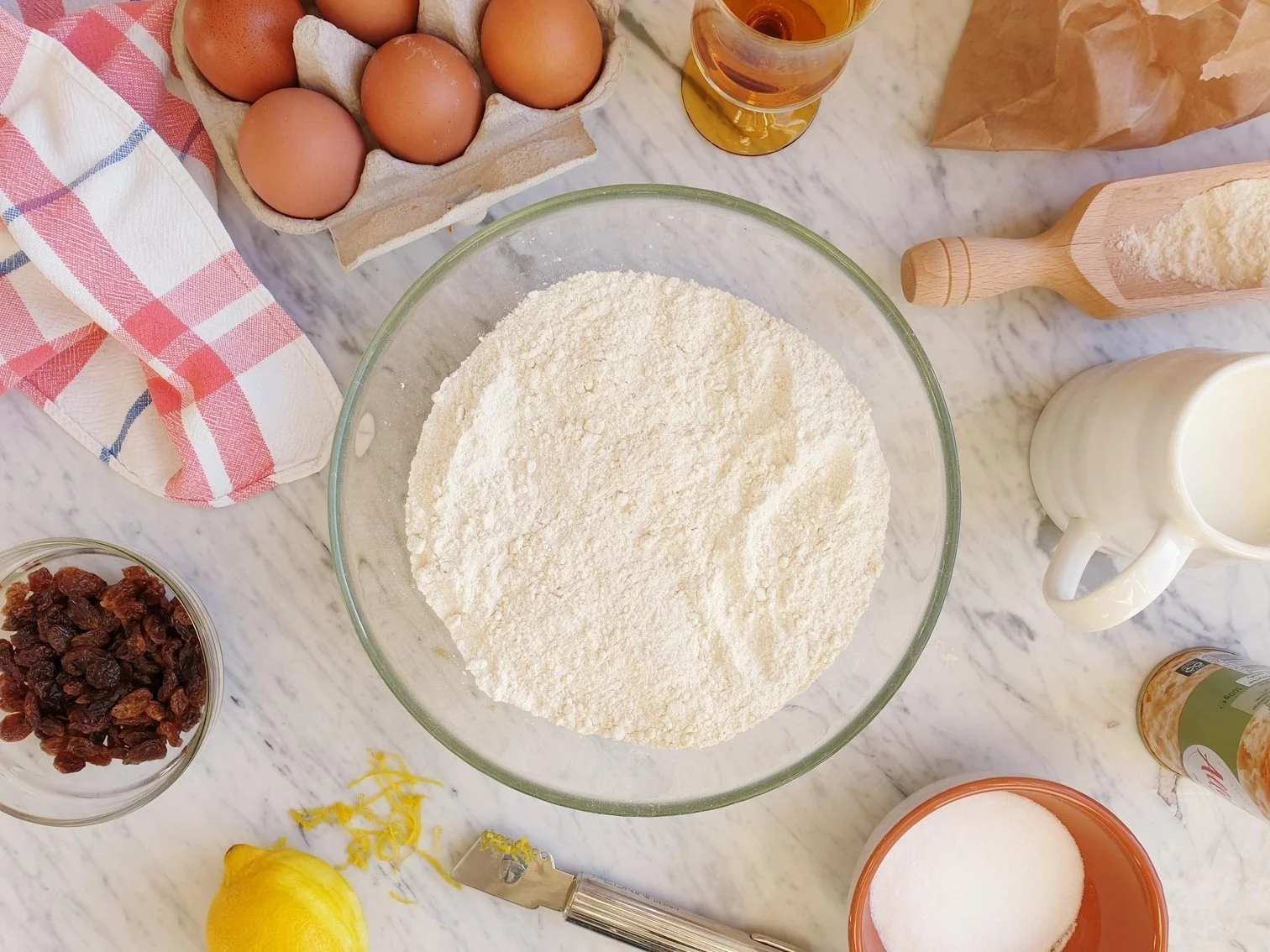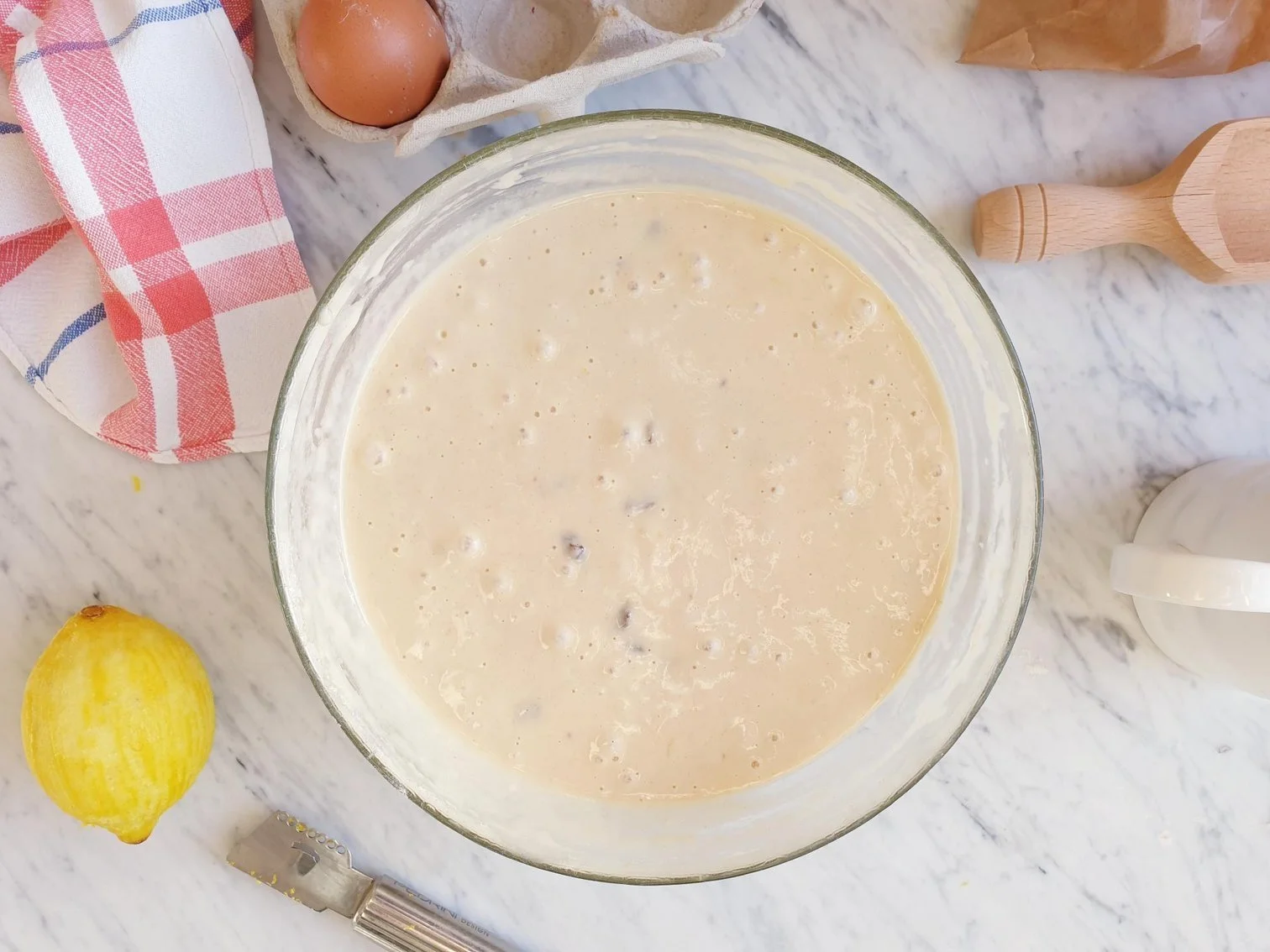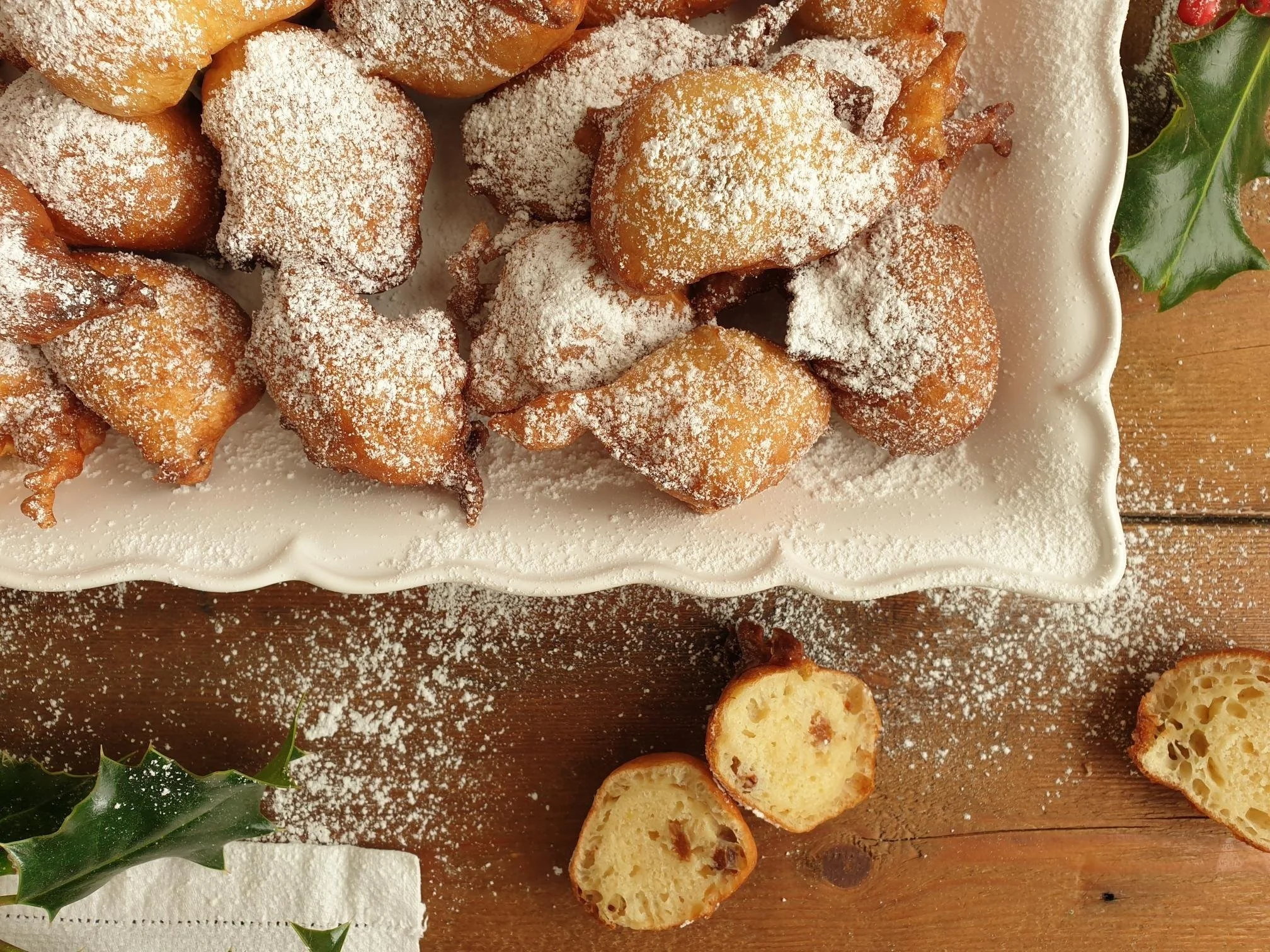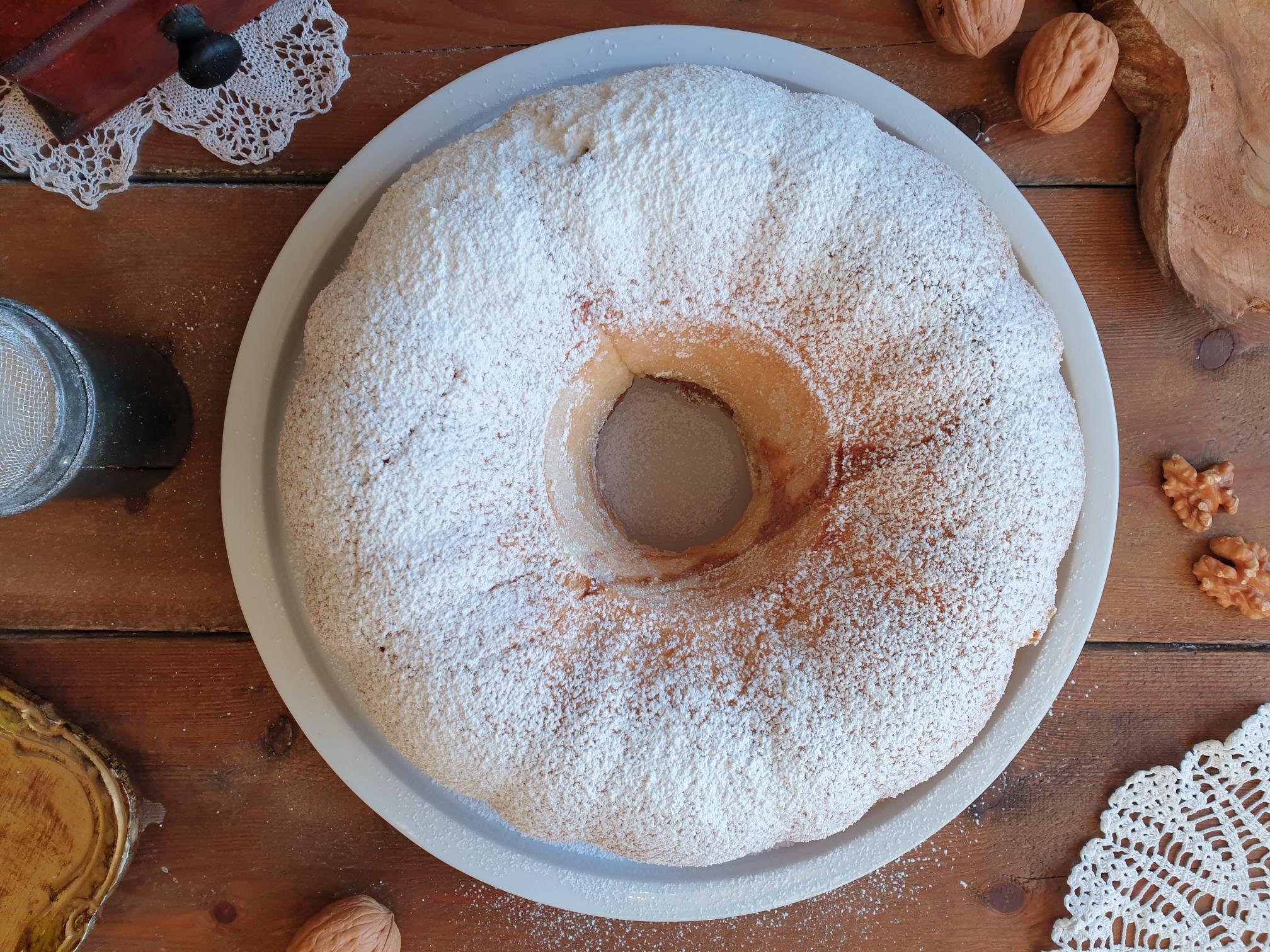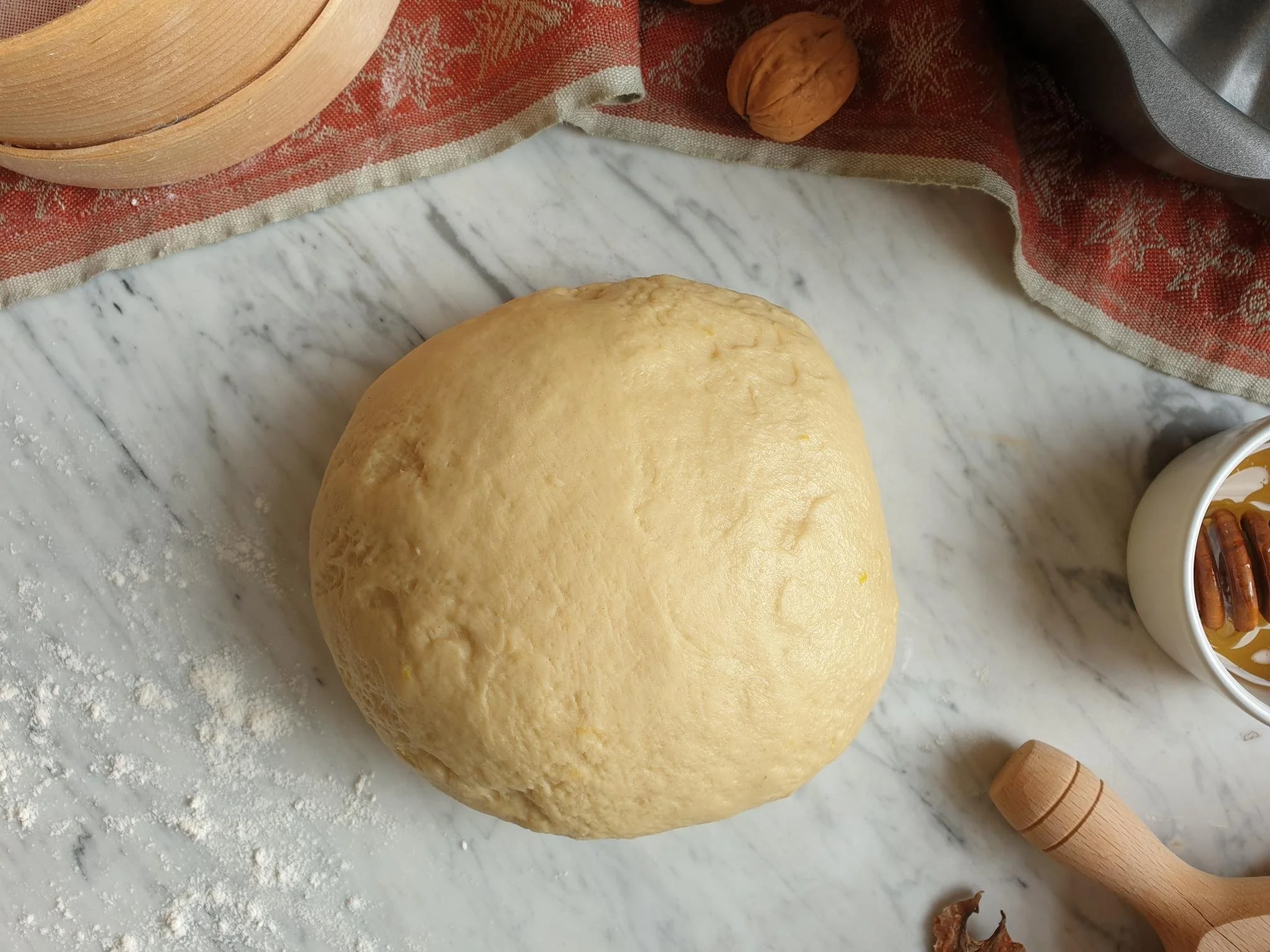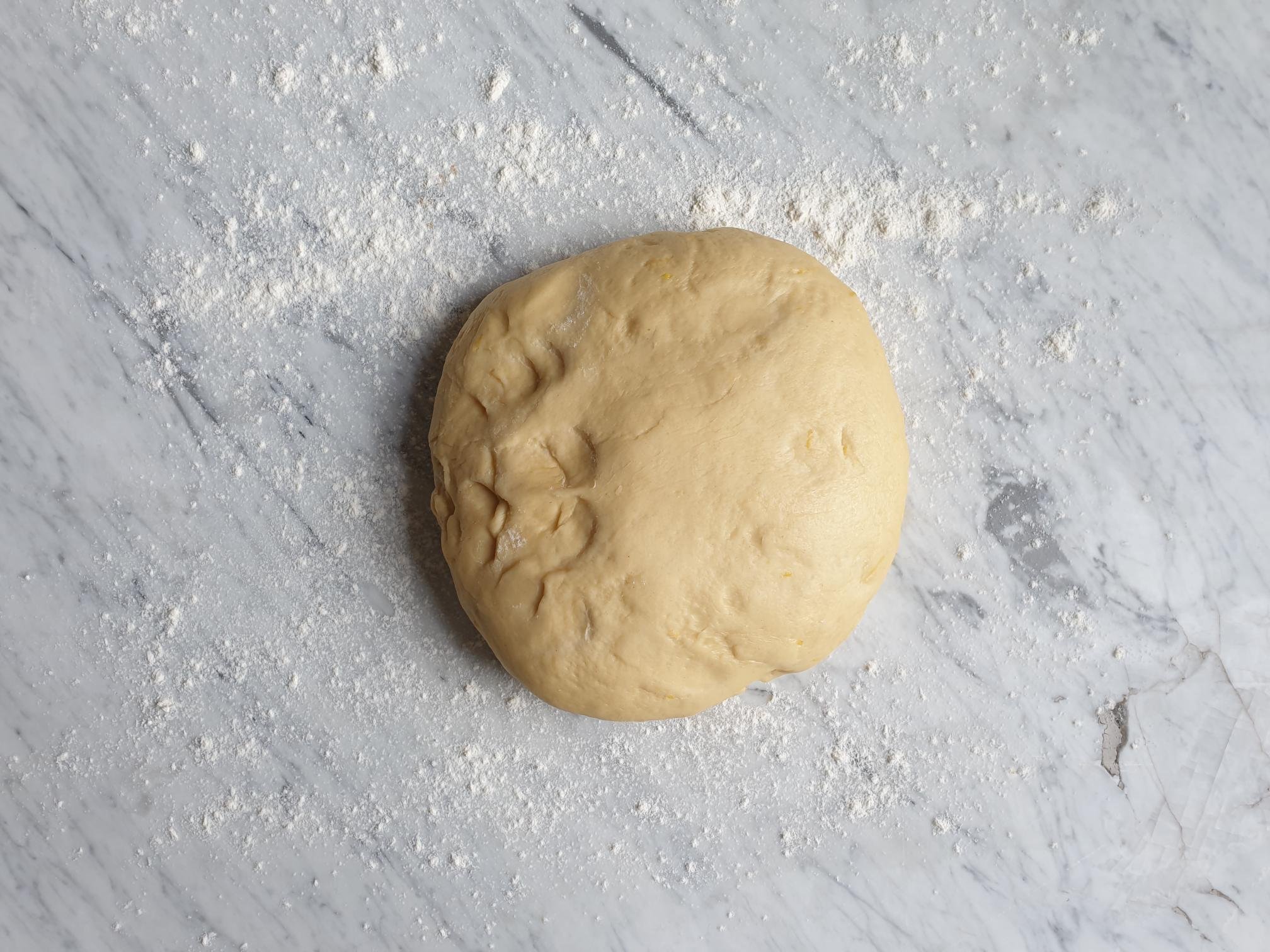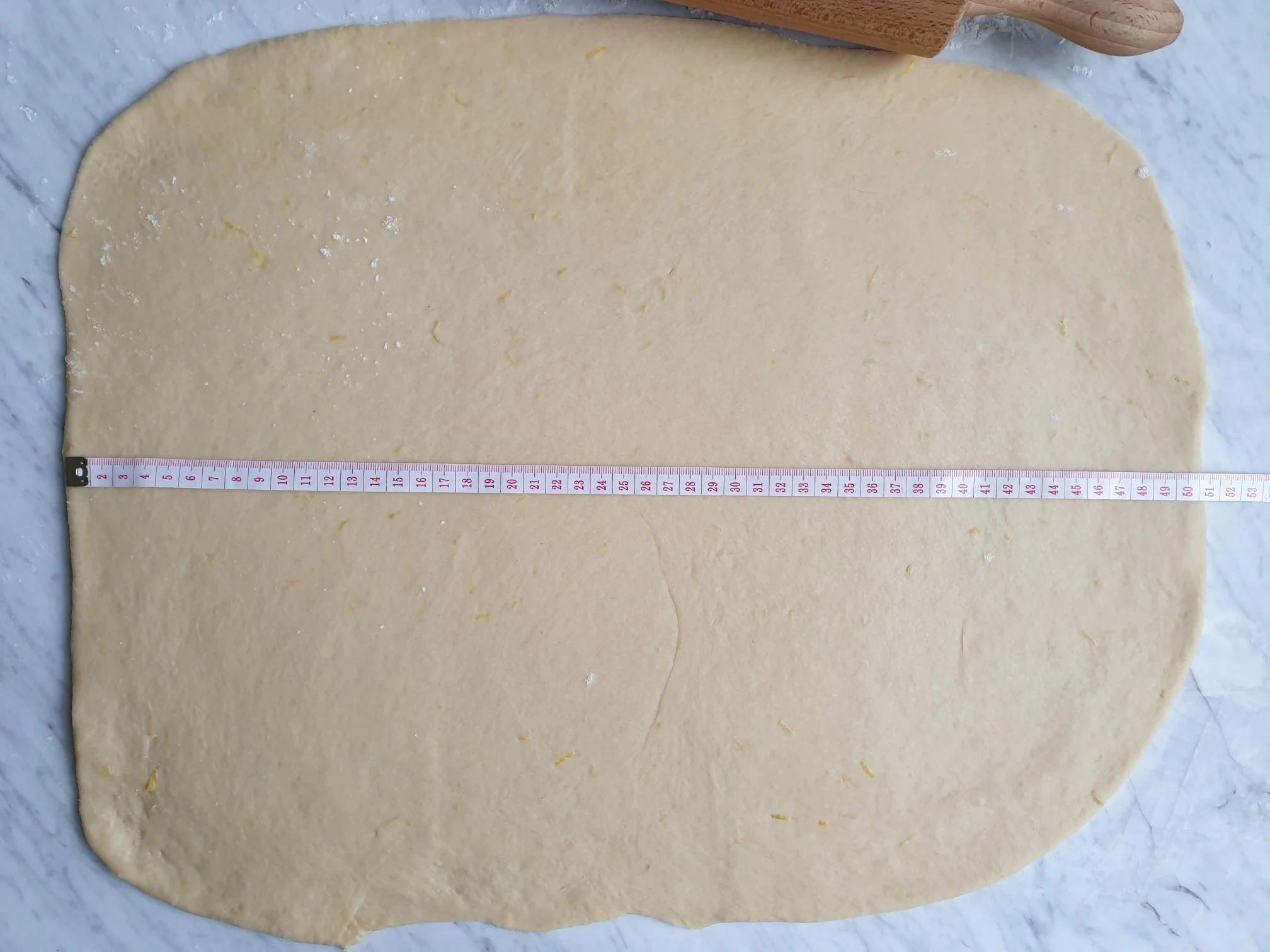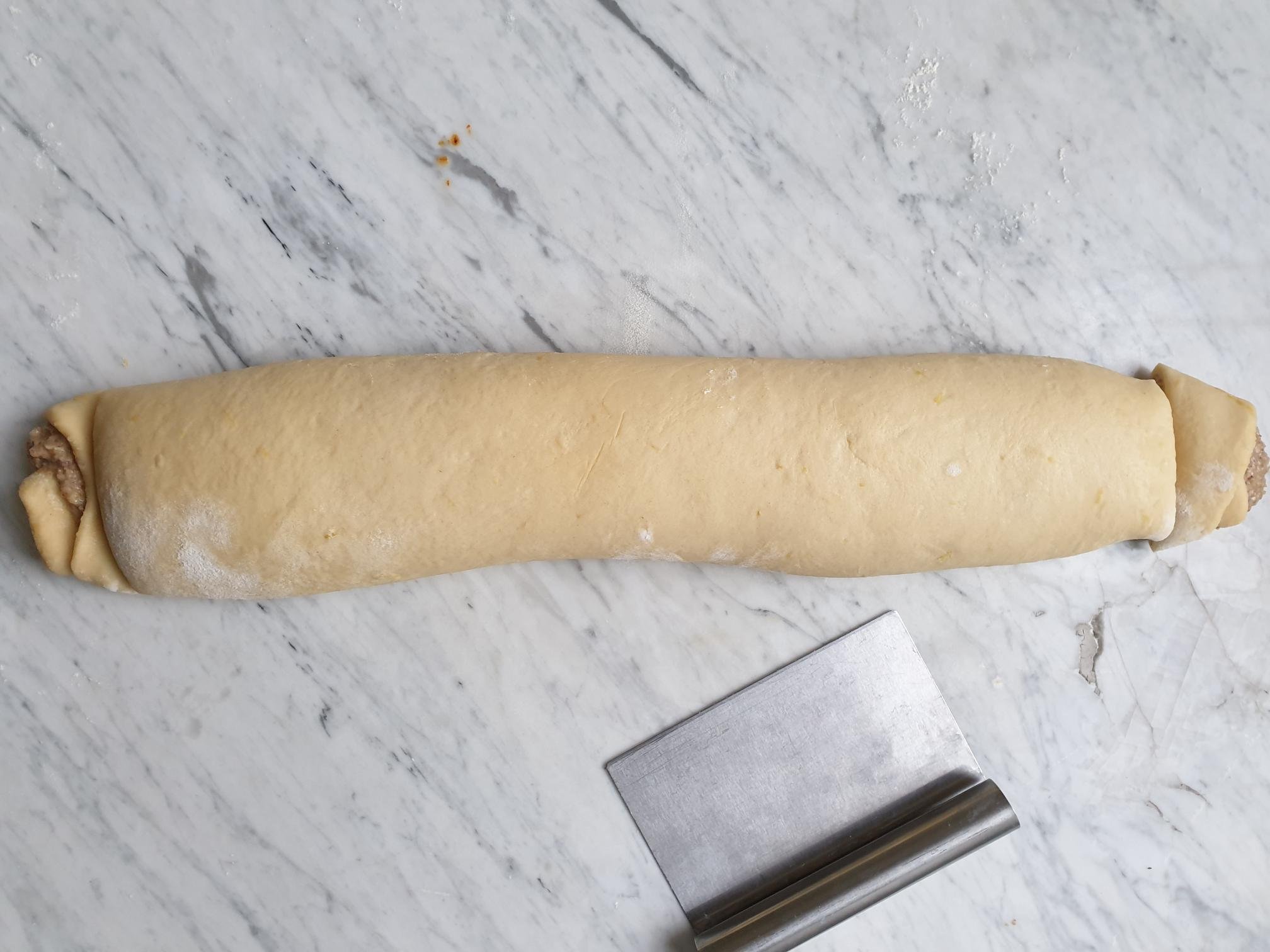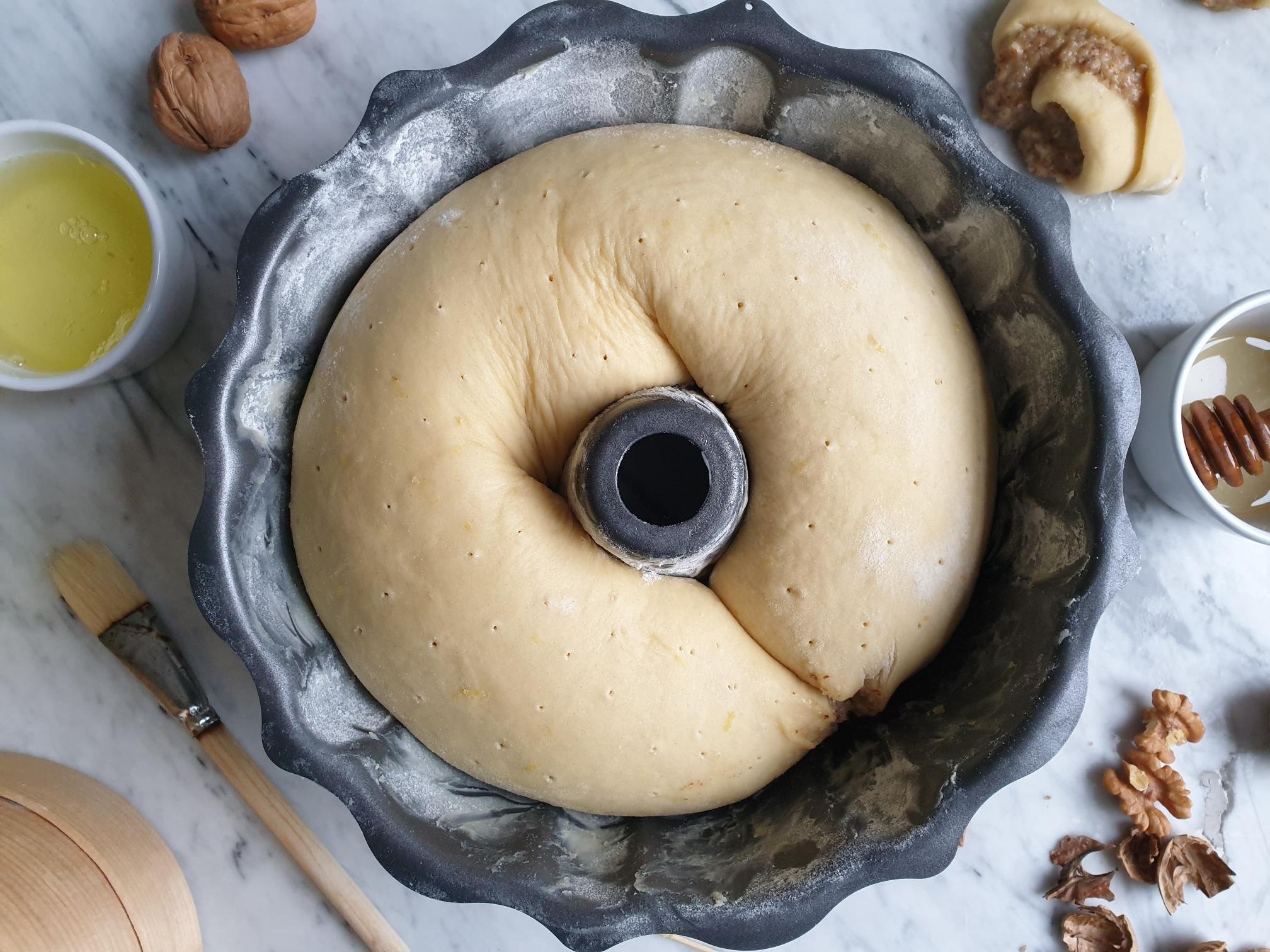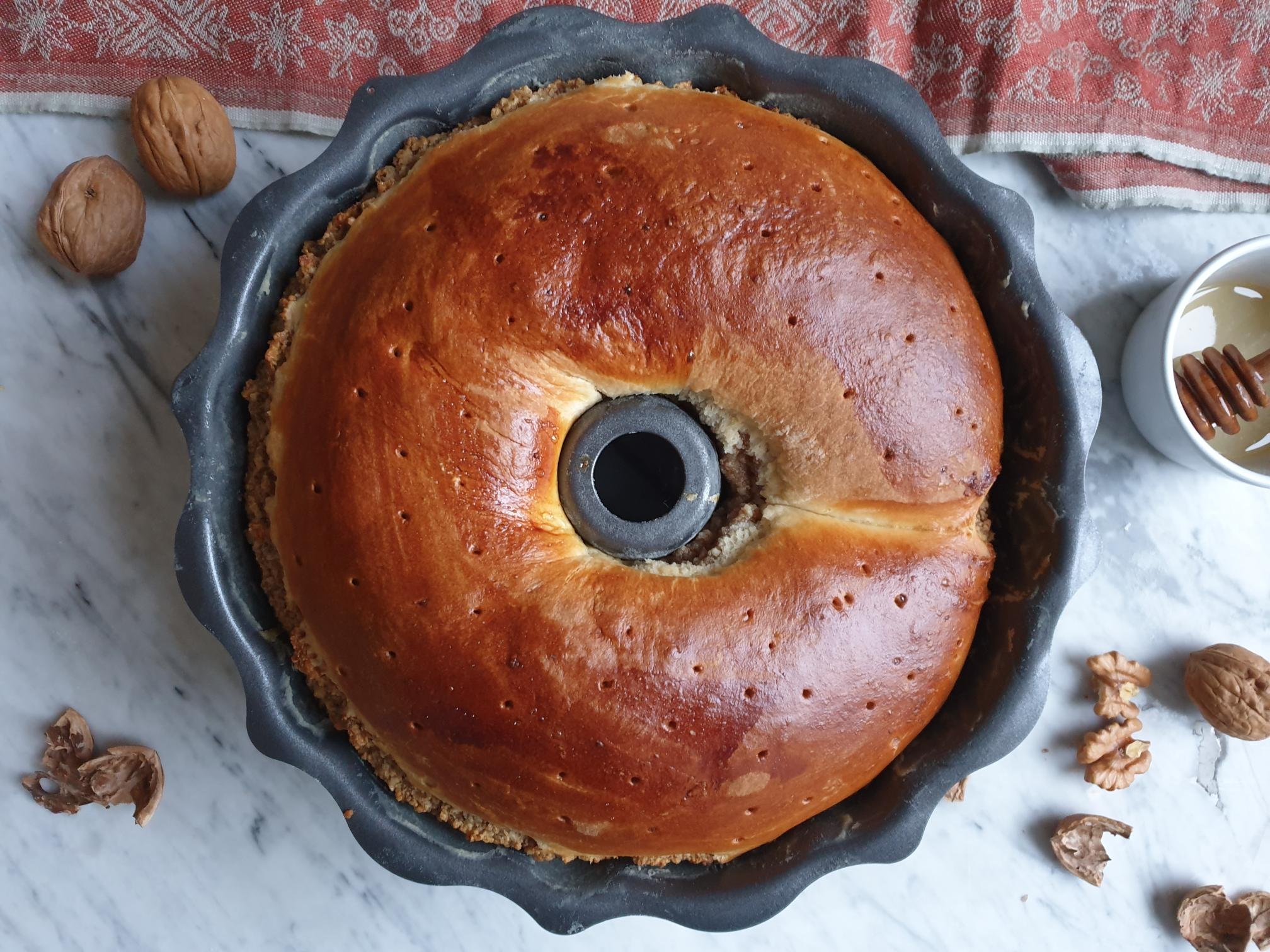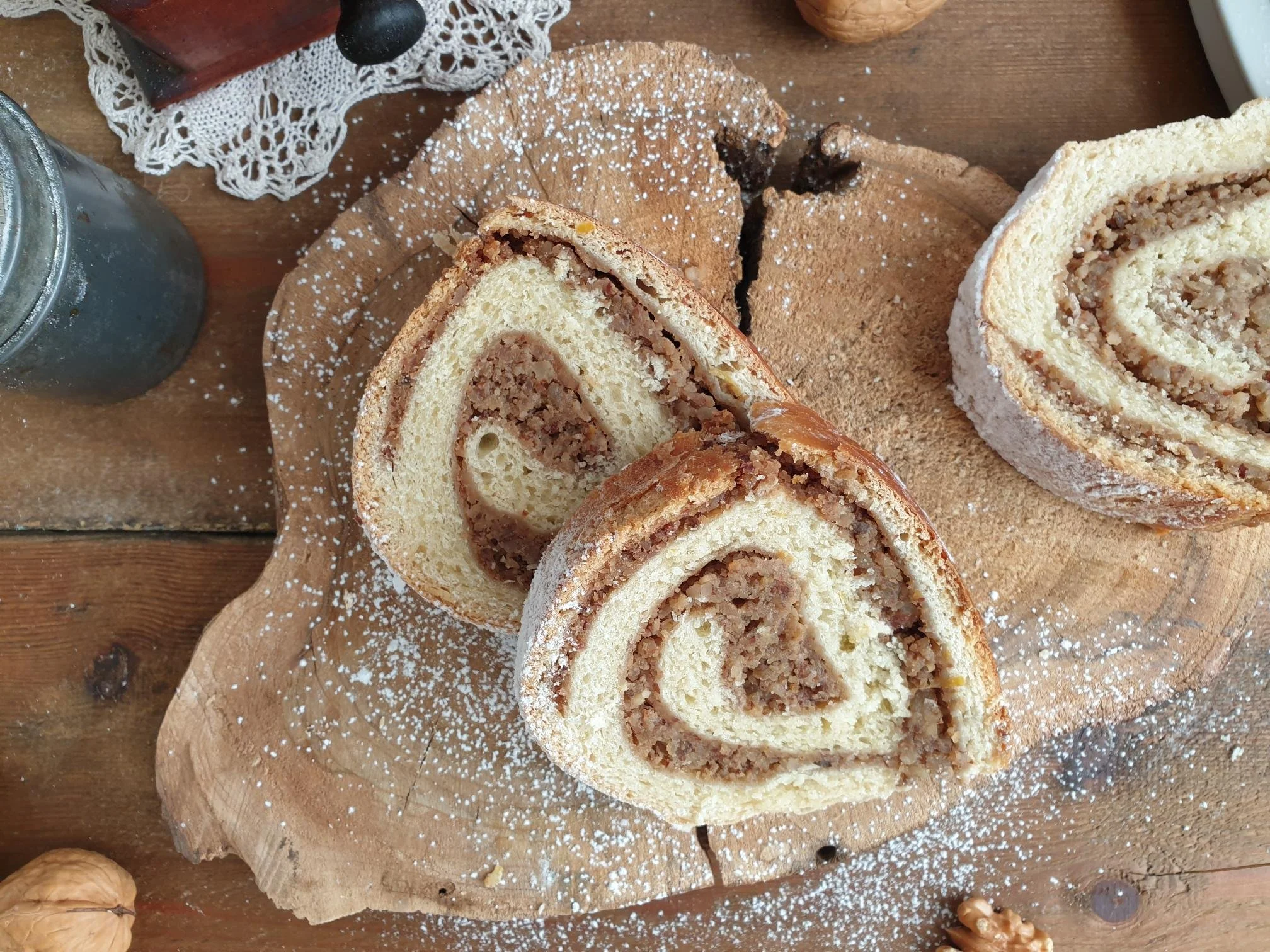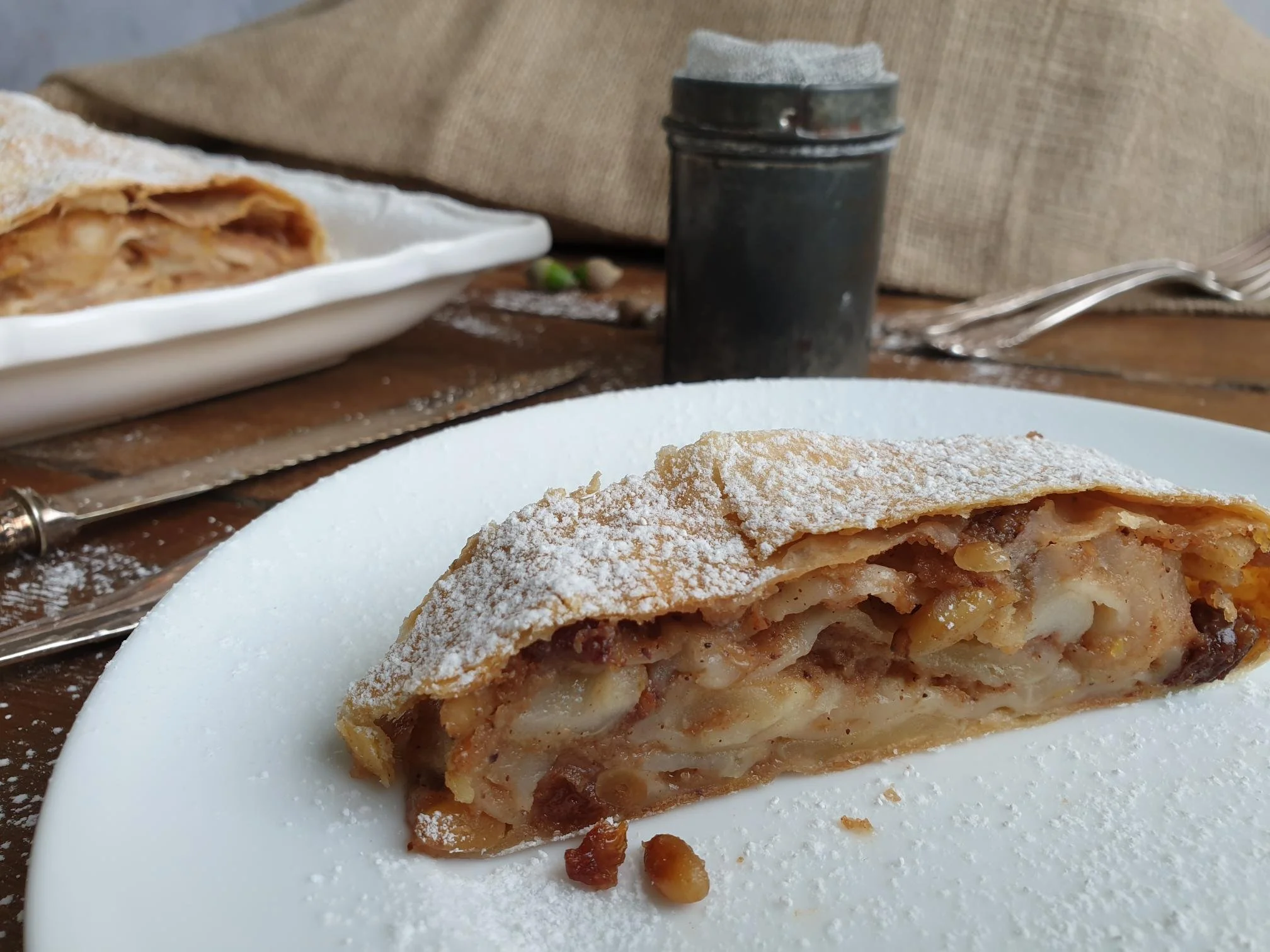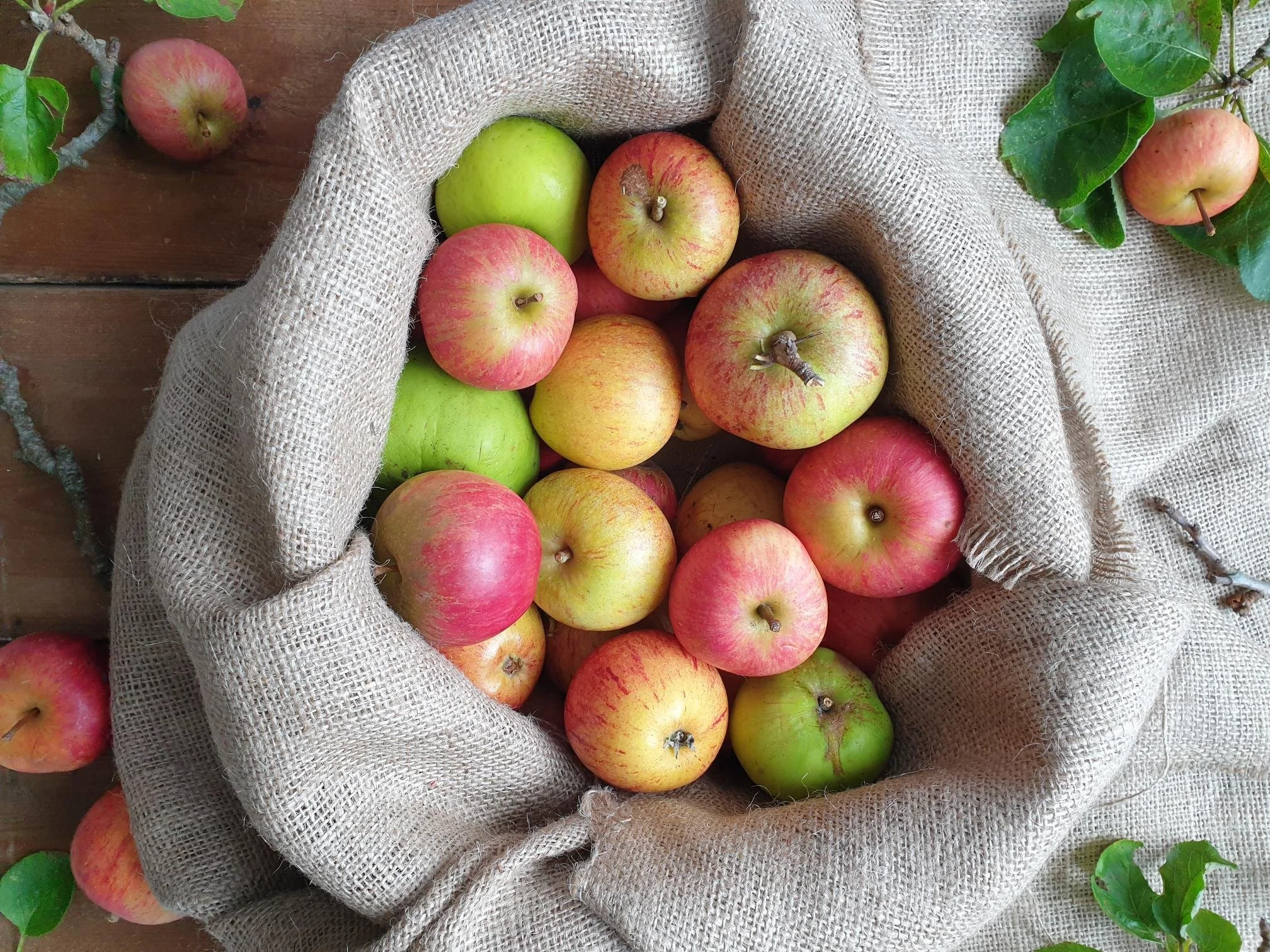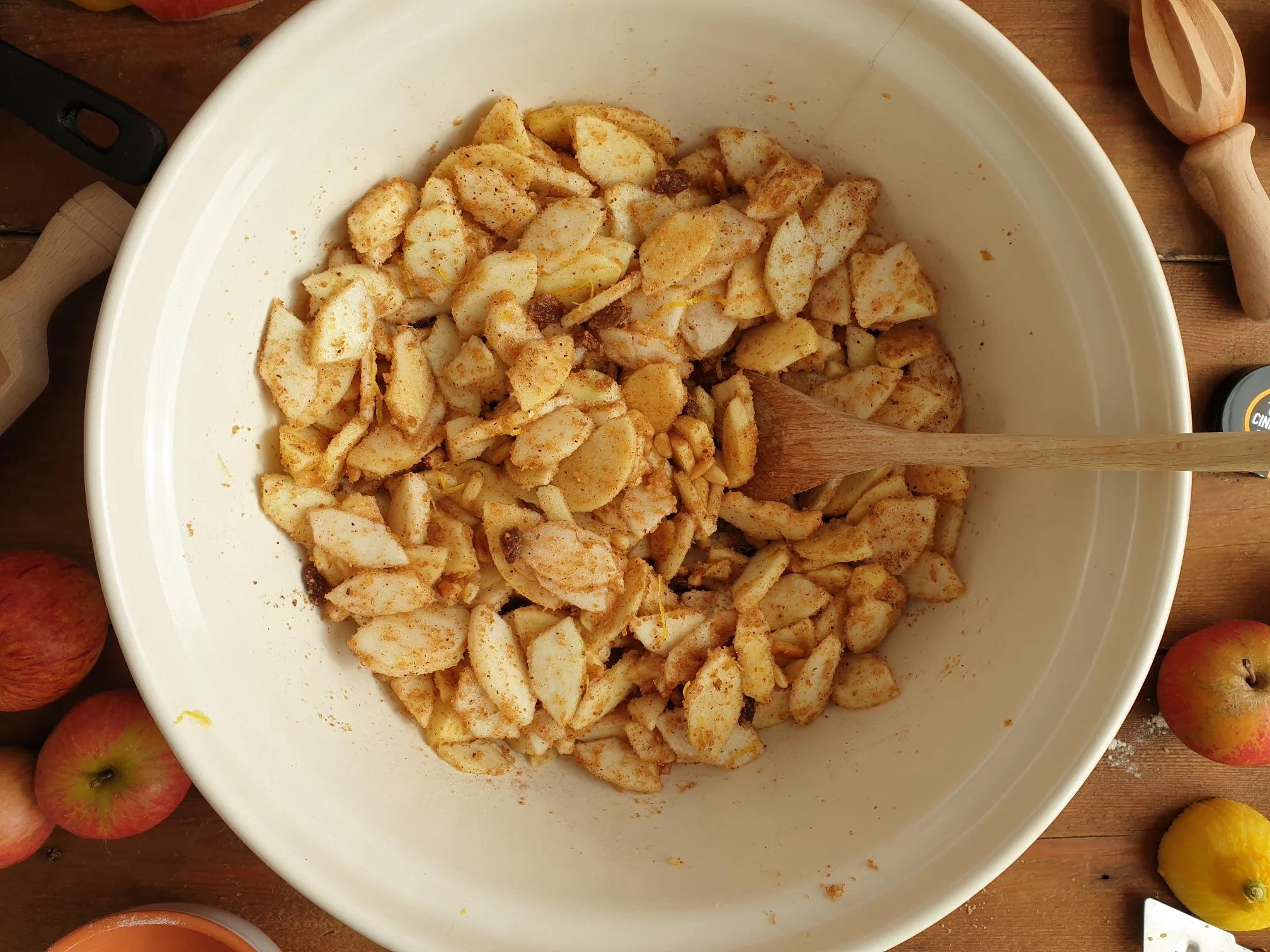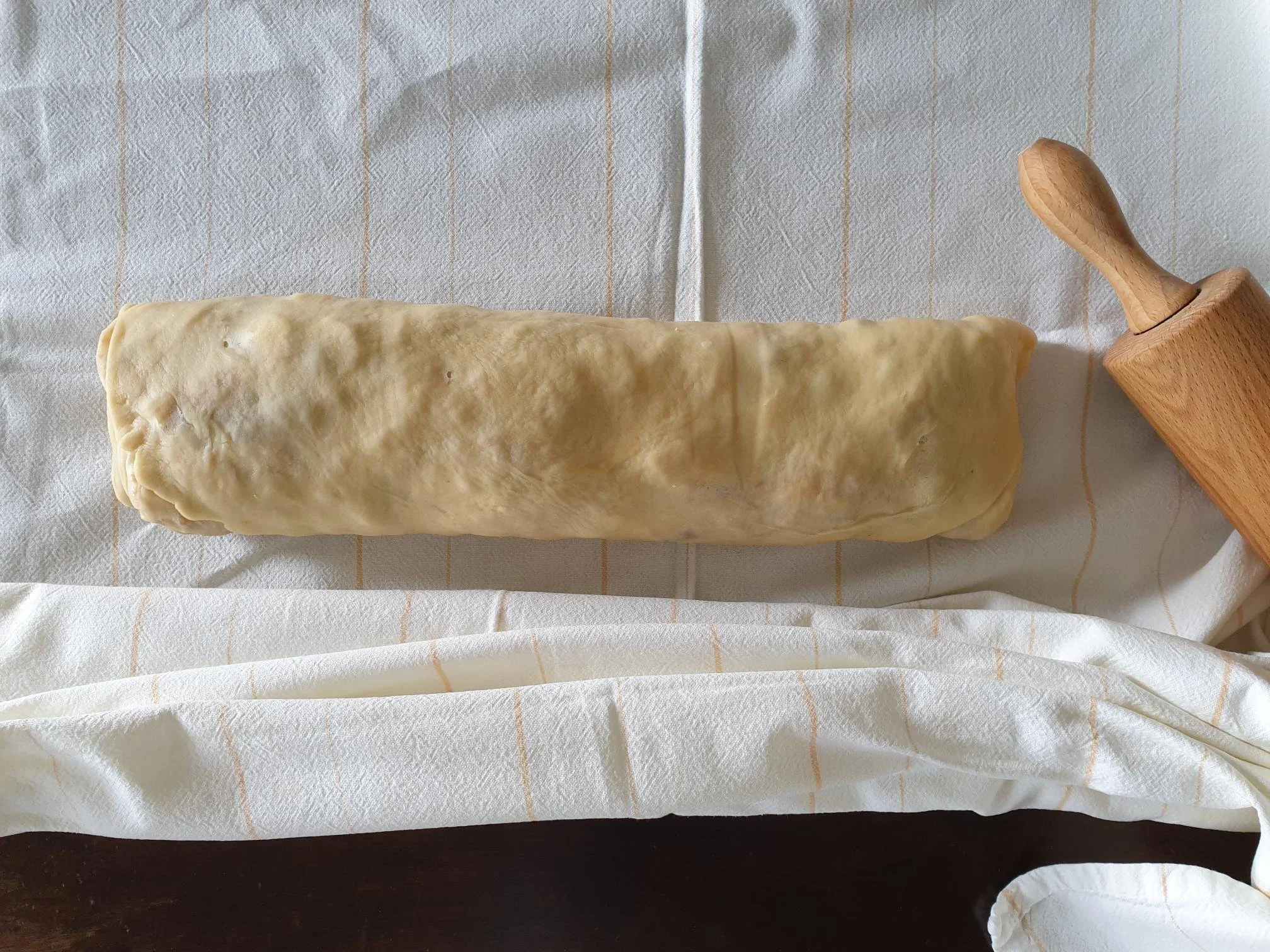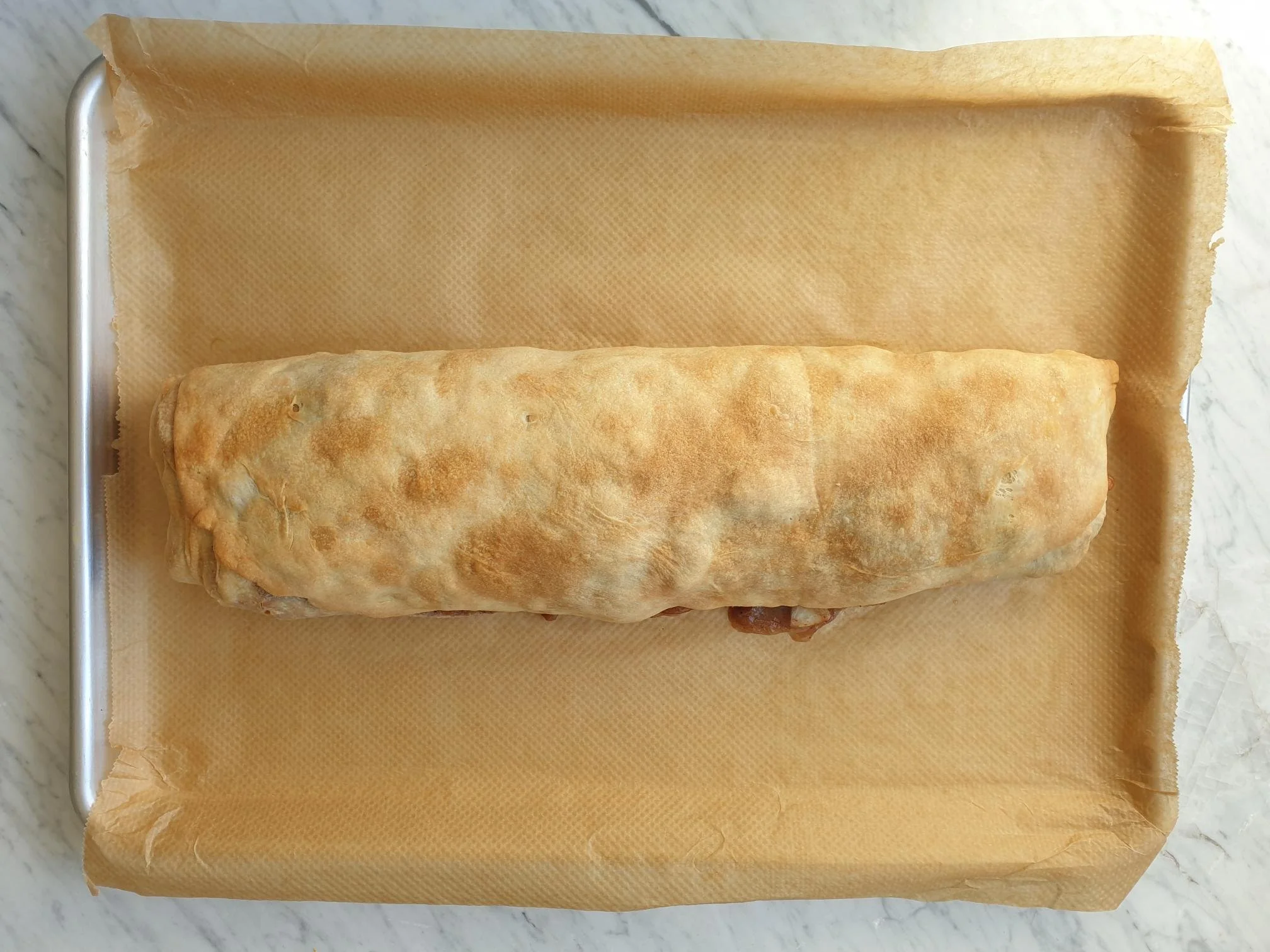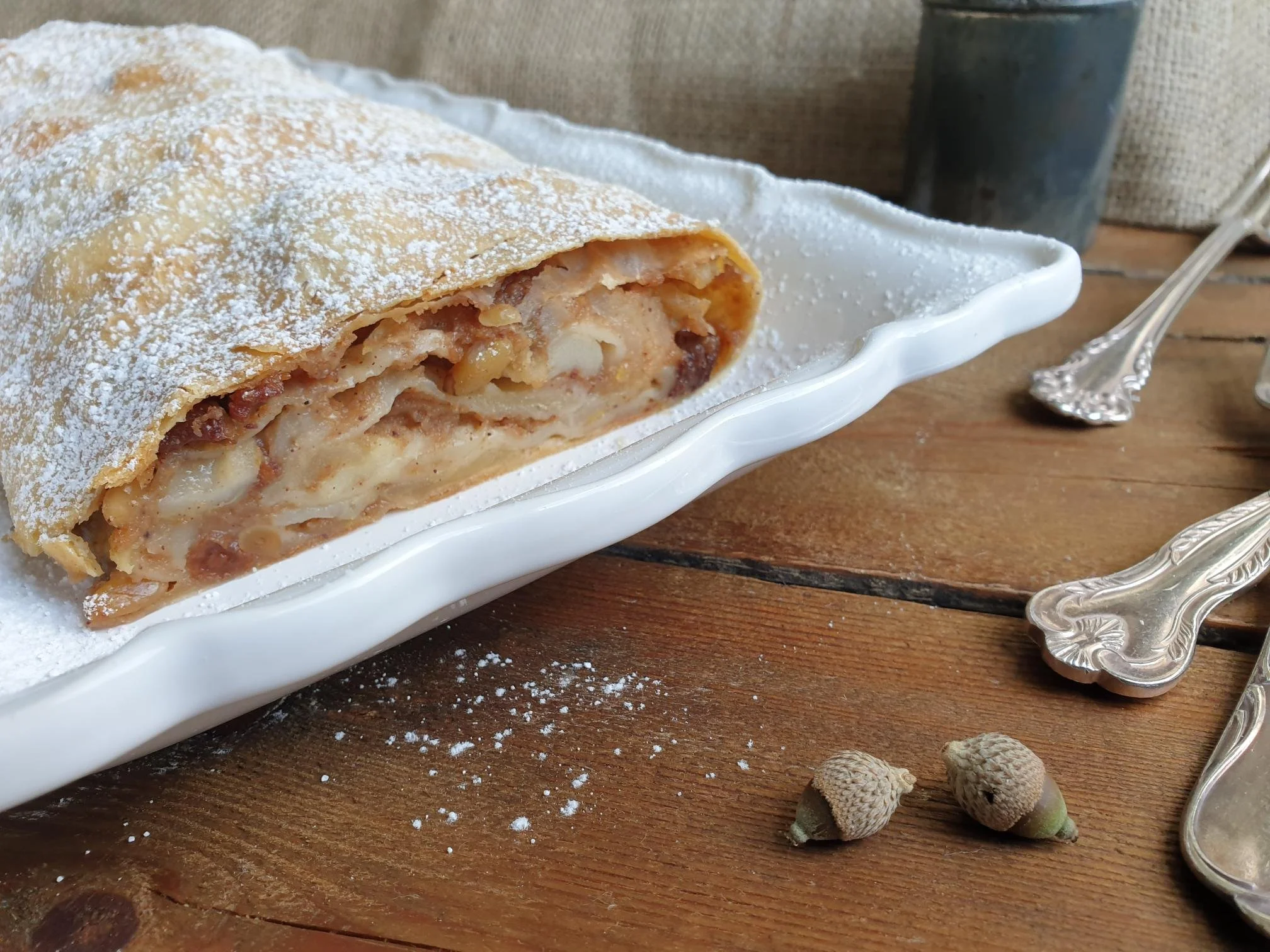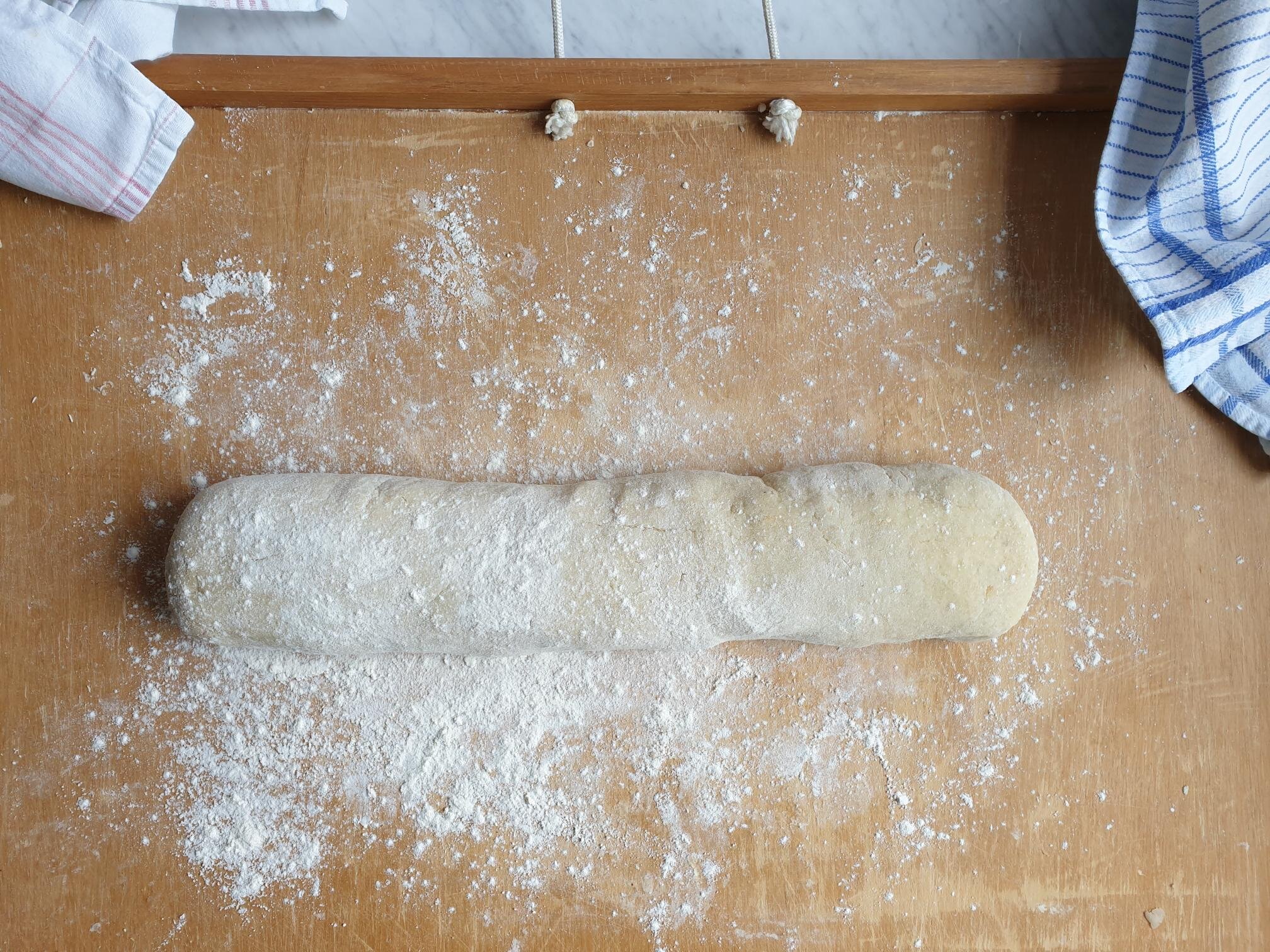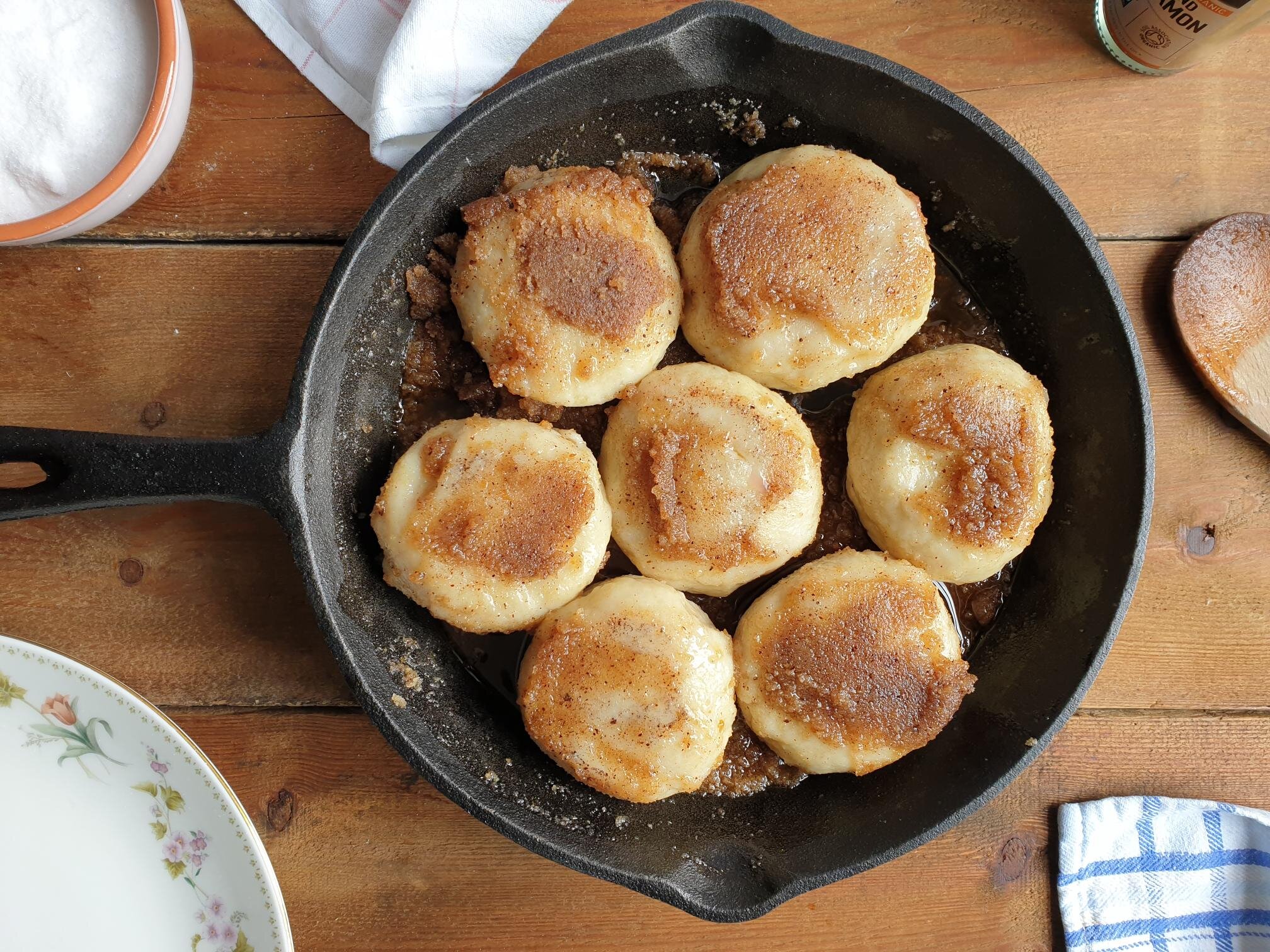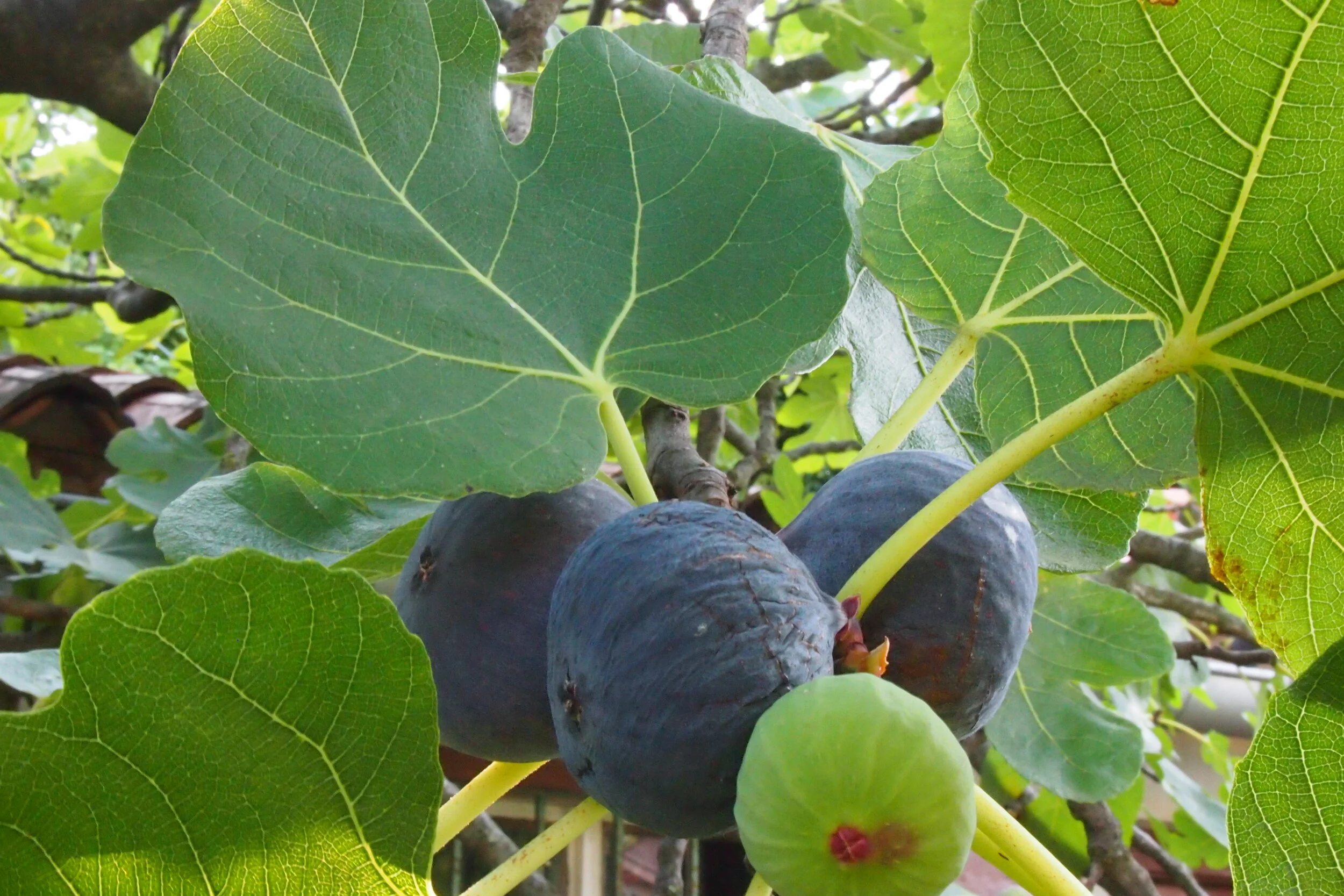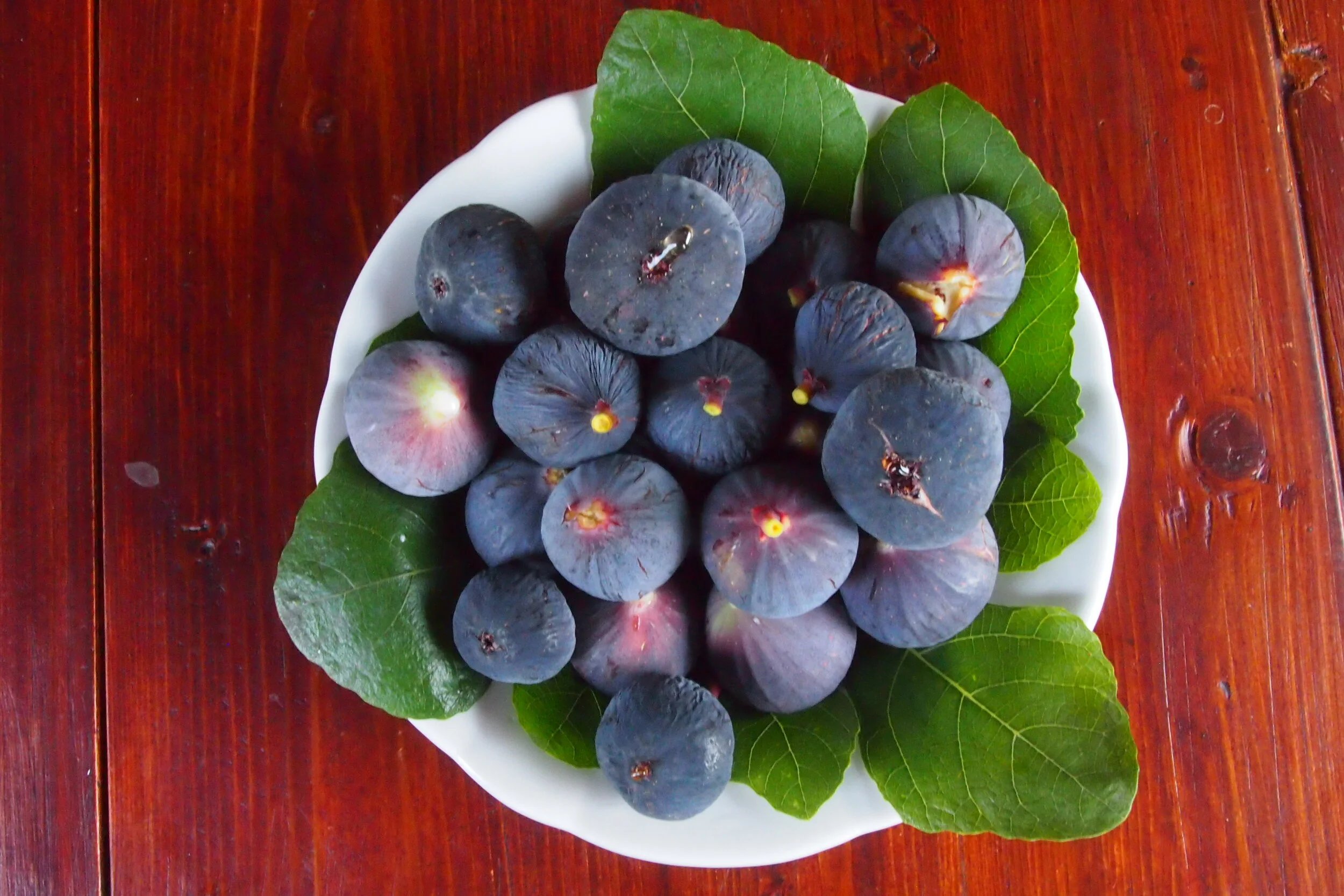Elderflower fritters Recipe
Bring the sunshine and the scent of summer in your kitchen with these elderflower fritters which are lightly fried elderflowers in a pancake batter like, they are golden, crunchy and a delicious dessert with a difference, they are a real treat and a delightful seasonal delicacy.
The culinary use of elderflower has been revolutionized in the past few years, but in the whole of Slovenia, including the Slovenian coast where I come from, elderflower fritters are a dish that is very old and traditional.
Those of you that have been reading my posts on this blog for a while, will know that I come from a family of very passionate foragers, and so there should be no surprise that this fragrant flower ends up on a plate. My maternal grandmother, stara mama Iva, would make them when we were little.
We children got away with eating just that, with a glass of milk, and skipping altogether a main evening meal, which is quite a common practice in neighbouring Austria.
If you are not too familiar with the elderflower, please go and read my page with the recipe for elderflower cordial where I explain a bit more in detail where, when, and how to pick this edible, fragrant, and sweet flower.
What can be better than going on a walk on a sunny day and bring home a free meal...try these elderflower fritters, you will be hooked, and will have another reason to look forward to a following spring/summer.
Ingredients
Serves 4-6 as a dessert (2-3 heads per person)
about 10-14 elderflower heads with their stems
100g all purpose (plain) flour
1egg
70ml milk
70ml very cold sparkling water
sea salt, a pinch
2 tsp caster sugar, optional
oil for frying (neutral tasting, I used sunflower oil)
icing sugar or vanilla icing sugar, for dusting
Method
Prepare elderflower heads by cutting the stems with the scissors but leaving at least 5cm of stem for easy handling (in other words enough stem to hold them by). Very gently shake any insects and dirt off your flower heads, but do not be tempted to wash the flower heads as you will loose the flavour.
In a mixing bowl, using a hand whisk, whisk the egg, add milk, sea salt and sugar, if using, and mix until well combined.
Add the flour gradually and whisk until smooth with no lumps, then add sparkling water which will help lighten the batter, set aside an leave it to rest for about 30 minutes.
Heat about 5cm of oil a pan (big enough to accommodate the largest elderflower head) until hot (180C on a temperature probe). You will know the oil is ready when a drop of batter bubbles immediately and turns golden in about 5 seconds.
Holding the elderflower by their stems, dip each elderflower head into the batter, so they are coated all over, gently shake off excess batter.
Drop the flowers into the pan with hot oil (flower side down) and fry for about 30 seconds. Fry one flower at a time.
They should be lightly golden in colour and not too brown.
Remove with a slotted spoon and dry on kitchen paper.
Dust generously with icing sugar, serve and eat while still warm and crunchy.
Delicious also drizzled with honey, accompanied with vanilla ice cream, lemon sorbet or fresh strawberries, cherries or other seasonal fresh fruit of your choice.
Just a thought
Elderflower fritters ideally should not be made well in advance as the batter, which should be crisp, will become soft.
Wine suggestion
Friuli Colli Orientali Traminer Aromatico DOC 2021-Zorzettig

